#laws railroad museum and historical site
Explore tagged Tumblr posts
Text


Some of my art! These are all my train gijinkas! From the top left to the bottom right: Southern Pacific no. 18 'Slim Princess', Union Pacific no. 4014 'Big Boy', Little Princess (a small fake train made form wood for toddlers to play in), Death Valley Railroad no. 5 Doodlebug, and Southern Pacific no. 9.
All but Big Boy can be found at the Laws Railroad Museum and Historical Site in California. I've been there a few times and thought I ought to draw its residents as humans. Big Boy was sort of a request from my father so he's there, too.
A few facts: - Without their shoes, Doodlebug is slightly shorter than no. 9, but with shoes, he's slightly taller. - Little Princess calls no. 9 'Nina' and Doodlebug 'Doodles' - In normal form, only Doodlebug can move regularly, but Slim Princess is able to move and no. 9 may be able to soon.
Here's the link to Laws' site and Big Boy's schedule, if you want a little further reading:
#laws#laws railroad museum and historical site#trains#locomotive#big boy#humanization#human form#gijinka#art#artists on tumblr#historical#up no. 4014#sp no. 9#sp no. 18#dv no. 5
5 notes
·
View notes
Text





13 destinations for African-American history and culture
Visit these significant sites of memory and perseverance across the country.
In 1860, the schooner Clotilda—the last slave ship to bring African captives to the American South—arrived at the Alabama coast, its hold containing 110 people smuggled into the U.S. more than 50 years after importing slaves was outlawed. After an intensive yearlong search, supported by the National Geographic Society, marine archaeologists have located the Clotilda. Few slave vessels have ever been found, so this groundbreaking discovery unlocks a mystery that many thought lost to history. (Read more about finding Clotilda.)
Such breakthroughs help preserve our shared heritage and tell the stories of the estimated 389,000 Africans delivered into bondage in mainland America from the early 1600s to 1860. For some descendants of slaves, artifacts such as the Clotilda represent a tangible connection to their ancestors. For travelers, such discoveries can present an opportunity to learn more about U.S. history.
“The African-American experience is the lens through which we understand what it is to be an American,” writes Lonnie G. Bunch III, the founding director of the National Museum of African American History and Culture. The national collection in Washington, D.C., is just one of many diverse museums and monuments across the country that help visitors connect to significant moments in black history and to learn about the country’s legacy of racial injustice. Here are 13 destinations for discovering more about African-American history and culture.
National Museum of African American History and Culture
Despite initial funds provided in 1915 by black Civil War veterans and a signed Public Resolution from President Calvin Coolidge in 1929 establishing a commission to plan its construction, it wasn’t until legislation signed by then President George W. Bush in 2003 that the museum had the authorization it needed to be created on the National Mall. Since the museum opened in fall 2016, visitors will be able to explore more than 400 years of artifacts and historical information detailing the African American experience. (Read more about the museum.)
Charles H. Wright Museum of African American History
Established in 1965, this Detroit museum holds the world’s largest permanent collection of African-American culture. Among the more than 35,000 artifacts, find interactive kids stations, displays on trailblazers in science and engineering, and stained-glass windows by Samuel A. Hodge that depict stories of notable African Americans from dancers to civil rights activists. The annual three-day African World Festival held in August celebrates the cultures of the diaspora with hosts free performances by gospel legends such as the Clark Sisters, African drummers, and dance troupes.
Tuskegee Airmen National Historical Museum in Detroit, Michigan
The Tuskegee Airmen of World War II, the first squadron of back military airmen, weren’t considered equals in the eyes of the law but that didn't stop them from defending the country. The museum details their training and the role they played in desegregating the military. Also find monuments to the men who served as “Red Tails” all over the country, including a National Park Service site in Tuskegee, Alabama, in their honor.
National Memorial for Peace and Justice in Montgomery, Alabama — Informally called the lynching memorial, the first U.S. commemoration of the thousands of men, women, and children who were murdered—primarily because of the color of their skin—opened in Montgomery in April 2018. This Alabama site holds 805 hanging, steel rectangles in the shape of coffins, each representing one of the U.S. counties where a documented lynching took place, as reported by legal advocacy nonprofit Equal Justice Initiative. Steps away, visitors may explore the Legacy Museum: From Enslavement to Mass Incarceration, which opened on the same day and displays the history of racism in America—beginning with slavery before examining lynching, the Civil Rights era, and the present. (Discover the new U.S. Civil Rights Trail in Alabama.)
Whitney Plantation in Wallace, Louisiana — A slave cabin from a South Carolina plantation sits among the exhibits at the NMAAHC. At the Whitney Plantation, visitors can walk the fields once toiled in by slaves and learn the history of this brutal time in American history. Informed docents provide tours through memorials, slave cabins, and the great house with a unique focus on the slaves’ perspective. (Plantations are a dark chapter in American history—here’s why to visit.)
National Underground Railroad Freedom Center in Cincinnati, Ohio — The intricate, secret network of allies that runaway slaves relied on to escape to freedom was called the Underground Railroad. Although slavery ended in the United States roughly 150 years ago, the National Underground Railroad Freedom Center works to keep the story and the message alive for the current generation. With exhibitions that highlight slave trades of the past and present, the center presents interactive exhibits, films, and even includes a slave pen from Kentucky built in the early 1800s. The moving tribute is even more relevant given the approximately 27 million people estimated to be enslaved around the world today. (What if Martin Luther King Jr. were never assassinated?)
Negro Leagues Baseball Museum in Kansas City, Missouri — Long before Jackie Robinson became a household name, African American baseball players were making a name for themselves on the field. The Negro League offered these men a place to play in a segregated America. The museum highlights the successes and struggles of the players (both superstars and the unknown) and provides a glimpse into the incredible talent kept out of the mainstream. The museum is located in the historic 18th and Vine district with the American Jazz Museum, also worthy of a look for those in town.
Black American West Museum in Denver, Colorado — What started as an ode to black cowboys has grown to include tales and artifacts of African Americans who made their way west to forge new lives, whether driven by professional or personal circumstances. Located in the former home of Colorado’s first female African American physician, Justina Ford, the museum is packed with photos and artifacts is best experienced with a pre-arranged tour.
California African American Museum in Los Angeles, California — This 44,000-square-foot museum does a great job of showcasing items from African American history while also heralding contemporary themes. The exhibition “Oh Snap! West Coast Hip Hop Photography” is just one example of how the museum makes the collection interesting, informative, and accessible to younger audiences.
91 notes
·
View notes
Text
Cockroach Control And Prevention In Yakima
Flying Insect Control And Prevention In Yakima
Are you aware about Sprague Pest Solutions Company as one of the top providers of cockroach control and prevention in Yakima? They have been providing professional pest control services throughout Union Gap, WA and nearby places. Meaning, the law company is one of the best service providers these days. Aside from that, science guides everything they do when it comes to identifying pest prevention and elimination solutions for your business. Since their founding, Sprague team members have used science to improve outcomes for their clients. With that, you can let science and Sprague be your partner in the fight against pests.
History
There are a lot of people who want to study the history of Union Gap, WA. The place is obviously popular among travellers and backpackers from across the globe. Usually, these people first familiarize themselves about the place by reading its historical background. Basically, the city of Union Gap was originally named Yakima City and was officially incorporated on November 23, 1883. When bypassed by the Northern Pacific Railroad in December 1884, over 100 buildings were moved with rollers and horse teams to the nearby site of the depot. In addition, the new city was dubbed North Yakima. Then in 1918, North Yakima was changed to simply Yakima, and the original town to the south was named Union Gap.

Yakima County’s first Guitar Center location is set to open in Union Gap
YAKIMA, Wash. — Do you need a one-stop-shop for all of your musical needs? Maybe you’re gearing up for a big show or picking up supplies for a young guitarist? The Guitar Center location opening near Yakima Valley Mall in Union Gap should fit all of your rock-and-roll needs. Read more here...
There are many people in Union Gap, WA area who love music these days. No wonder it’s good news that Yakima County’s first guitar center location is open in Union Gap. So if you need a one-stop-shop for all of your musical needs, it’s the place that you should visit nowadays. Maybe you’re gearing up for a big show or picking up supplies for a young guitarist, so then it’s perfect for you. The Guitar Center location opening near Yakima Valley Mall in Union Gap should fit all of your rock-and-roll needs. Lastly, the new Guitar Center that is located at 2507 Main St., Union Gap, WA 9890 hosted a store opening celebration at 10:00 a.m. last Thursday, January 20, 2022.
Central Washington Agricultural Museum in Union Gap, WA
Are you aware that the Central Washington Agricultural Museum in Union Gap, WA is one of the most renowned tourist spots in the area? For so long, a lot of people visited the place for sightseeing and relaxation purposes. If you’re fond of museums, the area is an awesome choice for your next adventure. The said travel destination is the largest museum of its kind in the Pacific Northwest. It is home to more than 150 antique tractors, over 1,000 pieces of historic machinery and acres of exhibits that showcase life on the farm over the past 100 years. Lastly, it is exactly located at 4508 Main St, Union Gap, WA 98903, United States.
Link to maps
Central Washington Agricultural Museum
4508 Main St, Union Gap, WA 98903, United States
Continue to Main St
3 min (0.7 mi)
Continue on Main St. Take W Ahtanum Rd to S 3rd Ave in Union Gap
6 min (2.9 mi)
Turn right onto S 3rd Ave
Destination will be on the left
29 s (0.2 mi)
Sprague Pest Solutions - Yakima
2404 S 3rd Ave, Union Gap, WA 98903, USA
1 note
·
View note
Photo




Western Reserve Village
Canfield Fairgrounds
7265 Columbiana-Canfield Rd.
Canfield, OH 44406
The historic Western Reserve Village is located at the Canfield Fairgrounds in Canfield, OH, and is a reconstruction of pioneer life at a typical Connecticut Western Reserve community in Mahoning County, Ohio. Buildings here were relocated from their former sites for preservation, and period-authentic gardens are planted around the buildings. The village celebrated 50 years in 2015. The site includes 10 historical buildings, a number of really neat artifacts, a historical steam engine with rail car and caboose, and a church constructed especially for the village. It is open only during the Canfield Fair which concludes each year on Labor Day. The village got started, when a small brick building called the Whittlesey Law and Records Office (built about 1840) was relocated from another site in Canfield. Whittlesey, who died in 1863, was an attorney and secretary to Gen. William Henry Harrison.
A few months later, a log cabin dating from 1829 was relocated from Butler Township, and it was followed by Canfield's Erie Railroad depot, built about 1865, initially for the Niles and New Lisbon Railroad, later acquired by the Erie, which the agricultural society obtained for $1 and moved from Newton and Railroad streets in Canfield. A few feet from it is a really neat crossing guard's tower from about 1880. In the early days of the village, the society also obtained some items from the Mahoning County Old Folks Home, which was being demolished. Included were bricks, stones and woodwork. The village's nearby carriage museum was built in 1976 and reportedly houses about 20 antique horse-drawn carriages from the 19th century.
The 1916 Baldwin Locomotive Co. 0-6-0 steam switch engine with its tender and caboose was used at the Campbell and Hubbard works of the Youngstown Sheet and Tube Co. from 1916 until 1962. When it was retired, it was donated to Penn-Ohio Railfans, which then gave it to Western Reserve Village in 1985 for static display. The wooden caboose was built in 1929 by the Standard Steel Car Co. in Butler, PA, and was used until 1956 by the Montour Railroad, an industrial line near Pittsburgh. It then was used by the Youngstown and Southeastern Railroad until being acquired by a Boy Scout council in Mahoning County.
Other structures in the village include the one-room Knaufville School (1900), Beaver Township Library (1910), blacksmith shop (mid-1800s), Dr. Patton's office (1913), country store (late 1800s), Mahoning County Veterans Memorial building, gazebo, stone watering trough, and a church. The latter is not an old structure; it was built in 2001, but was designed to resemble a church from the 1800s. It is available to rent for weddings, and the village is a wonderful venue for such a ceremony. The church was constructed for about $220,000 in private donations. It can seat about 100 people in two dozen pews donated by an Episcopal church in Youngstown. There are stained-glass windows above the altar and rear entrance. In between the buildings are a number of themed gardens, which have been planted since 1983. There are the Biblical Garden, Medicinal Herbs Garden, Children's Garden, Settlers Garden, Shakespeare Garden, Native American Garden, Shade Garden and Knot Garden.
0 notes
Text
Philadelphia Juneteenth events 2021: Where to celebrate emancipation

Love Philly? Join the free Billy Penn newsletter to get every part it’s essential learn about Philadelphia, every single day.
Federal staff have a break day for Juneteenth for the primary time after President Joe Biden declared it a federal vacation. The additional vacation day is Friday, since June 19 falls on a Saturday this 12 months.
Philadelphia authorities received’t be closed Friday, however all metropolis staff will obtain an additional paid break day, both by way of administrative depart or comp time, based on Mayor Jim Kenney’s workplace.
The mayor signed an govt order in January that formally made Juneteenth a city holiday, spokesperson Deana Gamble stated. The order was retroactive to final 12 months — when Kenney gave municipal staff the break day as the vacation gained in recognition in the course of the summer season of explosive human rights protests — and can final by way of the tip of his administration.
Efforts to memorialize Juneteenth as a metropolis vacation indefinitely are underway, Gamble stated. The administration is working to clear it with metropolis unions, and ensure it follows civil service laws and different guidelines.
Stated Mayor Kenney in an announcement, “Our administration is proud to acknowledge Juneteenth as an official metropolis vacation, which affords us all time for therapeutic, reflection and celebration of freedom.”
The vacation commemorates the 1865 date when Civil Struggle Union troopers arrived in Texas to implement the Emancipation Proclamation, which was signed two years prior. Whereas the order legally modified the standing of individuals designated “slaves” to “free,” not all areas of the nation paid heed, and federal troops had been despatched to ensure it took impact. Texas was the final holdout.
Devoted teams of Philadelphians have been celebrating “Freedom Day” for years, following within the custom of the first Juneteenth party, which featured particular meals and costume.
This 12 months’s Juneteenth weekend in Philly will buzz with a colourful array of occasions.
From an outside dance get together to historic reenactments, block events, and no-charge museum admissions, Freedom Day celebrations promise to the touch almost each nook of the town.
instagram
The Philadelphia Juneteenth Parade & Pageant was launched by the Pennsylvania Juneteenth initiative in 2016 and is helmed domestically by Michael A. Rashid, former president and CEO of AmeriHealth Caritas. The 2019 parade (final 12 months’s was canceled due to COVID) drew greater than 25k attendees, organizers stated on the web site.
This 12 months’s celebration kicks off with a Freedom Day March and rally from 52nd and Haverford to Malcolm X Park the place the competition will host its first ever “Artwork within the Park” exhibit. There will likely be a float competitors and a distributors honest.
When: June 19, 9 a.m. to three p.m. The place: 52nd Road and Haverford Avenue to Malcolm X Park, 5100 Pine St. Value: Free Extra data: juneteenthphilly.org
Stenton Mansion
Stenton Mansion was the 18th century residence of James Logan, William Penn’s secretary. It was as soon as additionally residence to enslaved African individuals. At present, the house stands as a museum and historic website.
Stenton in collaboration with Keepers of the Tradition, Inc. will host a competition at Stenton Park and the museum, that includes the Common African Dance & Drum Ensemble, story telling reenactments and the Ladies’s Sekere Ensemble. Admission to the museum may also be free.
When: June 19, 11 a.m. to 2 p.m. The place: Stenton Park, 4600 N. sixteenth St.; Stenton Mansion, 4601 N. 18th St. Value: Free Extra data: stenton.org
The Philadelphia Juneteenth Pageant at Historic Germantown
instagram
Johnson Home Historic Website was as soon as a cease alongside the Underground Railroad. For Juneteenth, the museum is filling the 6300 block of Germantown Avenue with a day’s value of commemorative actions and celebrations for Freedom Day, the positioning’s fifteenth such celebration.
This 12 months’s competition will embody a mixture of digital and in-person programming, which features a gun violence options panel of neighborhood leaders and specialists, an oral historical past of Juneteenth, morning yoga, dwell reenactments of pivotal civil rights activists and abolitionists Jo Ann Robinson and Harriet Tubman, and a theatrical slave narrative efficiency.
When: June 19, 1 to five p.m. The place: A number of places; 6300 block of Germantown Avenue Value: Free Extra data: johnsonhouse.org
Vernon Park trend present
Germantown’s Vernon Park will remodel to a runway for this two-day trend present and neighborhood competition occasion.
Along with trend and wares from native distributors, attendees can try the IGotNext gaming truck, a bounce home for kids and food and drinks.
When: June 19-20, 10 a.m. The place: Vernon Park, 5818 Germantown Ave. Value: $10 Extra data: Eventbrite
Jawnteenth
Juneteenth falls on a Saturday this 12 months, however the day earlier than, Black Lives Matter Philly is holding its annual Jawnteenth celebration. The afternoon-to-evening occasion options meals, music, dancing and marching. Bringing a garden chair is inspired, and organizers “lovingly welcome all individuals who establish as a member of [the Black] neighborhood,” on the occasions web page.
When: June 18, 4 to eight p.m. The place: Malcolm X Park, 5100 Pine St. Value: Free, pay as you go meals Extra data: Black Lives Matter Philly Facebook
A Juneteenth dance get together
Prepare to bop throughout DJ Na$h’s Juneteenth Pageant at Sunflower Philly. The get together will function native DJs like Bobby Flowers, HVNLEE and Brotha Taaj taking part in music from throughout the African Diaspora. There will likely be meals from the Jerk Hen Man and Philly Tropical Treats, and people can BYOB.
When: June 19, 1 to eight p.m. The place: Sunflower Philly, 1725 N. fifth St. Value: $5 to $15 Extra data: sunflowerphilly.org
Nicetown-Tioga’s Juneteenth neighborhood day
In Nicetown-Tioga, Metropolis Athletics Philly is sponsoring a block get together that includes Tyehimbe African Percussions, choral performances, free barbecue, pony rides from the Fletcher Road City Driving Membership, and extra.
When: June 19, 1 to three:30 p.m. The place: W. Tioga St. between nineteenth and twentieth Value: Free Extra data: dityathleticsphilly.com
Clear comedy
A comedy present on the Grand Yesha Ballroom merges Juneteenth and Father’s Day celebrations for the Clear Comedy & Style Present occasion.
Along with a comedy present with stand-ups like Timmy Corridor and Weight Ball, the occasion may also have music performances and on-site distributors.
When: June 19, 6 to 10 p.m. The place: The Grand Yesha Ballroom, 2308 Snyder Ave. Value: $25 to $40 Extra data: Eventbrite
Group day at Hatfield Home
Historic Hatfield Home, close to the nook of thirty third and Girard, will maintain a household enjoyable neighborhood day that includes a DJ, face-painting, giveaways and Philly-fave refreshments like mushy pretzels and water ice.=
When: June 19, 2 to five p.m. The place: Hatfield Home, 3201 W. Girard Ave. Value: Free Extra data: myphillypark.org
A millennial-geared hip-hop live performance
Millennial Juneteenth is a civic and volunteerism group geared towards, properly, millennials. To commemorate its namesake vacation, the group is throwing a competition and live performance headlined by Philly rappers Rocky and Dappa, and hosted by native social media comedian FunnyBullQuill.
When: June 19, 5 p.m. The place: Kingsessing Recreation Heart, 4901 Kingsessing Ave. Value: Free Extra data: millennialjuneteenth1865.com
The inaugural Black Man’s Convention
For 3 days, the Centennial Parkside CDC is internet hosting its inaugural Black Man’s Convention. It options in-person workshops for well being and wellness, yoga, meditation and reflexology, a light-weight lunch with a Keynote by scholar-activist Dr. Leon D. Caldwell and a sequence of neighborhood conversations.
When: June 18-20 The place: Numerous places throughout West Fairmount Park, together with Historic Belmont Mansion, 2000 Belmont Mansion Dr. Value: Free, ticketed Extra data: Eventbrite
Group Renewal on the ECO Basis
The ECO Basis, which opened its new community center in West Philadelphia final summer season, is holding a Juneteenth Group Renewal occasion in collaboration with the third Lap Podcast. The day includes a meals giveaway, vendor honest and psychological well being check-in.
When: June 19, 9 a.m. to five p.m. The place: The ECO Basis, 5411 Market St. Value: Free Extra data: @theecofoundation
Black Market, Juneteenth version
instagram
North Philly Peace Park’s Black Market will host a Juneteenth version. Along with a area of Black-owned distributors providing equipment, private care, music and instrument providers, residence and backyard wares and extra, the day will maintain a psychological well being dialogue, music and networking alternatives.
When: June 19, 12 to five p.m. The place: North Philly Peace Park, 2200 W. Jefferson St. Value: Free Extra data: @northphillypeacepark
You could have already seen it. From Wednesday, June 16, to Sunday, June 20, the Philly skyline will likely be illuminated in honor of the Juneteenth vacation.
The Workplace of Black Male Engagement is partnering with Enon Tabernacle Baptist Church for its 3rd Annual Brothas Stroll Health Walk and Community Day, which may also function video games and music.
The Wawa Welcome America Pageant is melding its conventional Independence Day celebrations with some Juneteenth ones, together with the Broad and Market Pageant Expertise, that includes dwell musical and dance performances, distributors and giveaways.
Watch a Fb Reside screening of the twenty fifth Anniversary of “Within the Land of Jim Crow,” a 5-part docuseries written and produced by the Philadelphia Fee for Ladies Govt Director Jovida Hill.
And on the Martin Luther King Jr. Recreation Heart, the Philadelphia Millennial Advisory Committee is throwing a neighborhood competition alongside 100.3 RNB Philly.
When: June 16 to June 20, varied occasions The place: Numerous places Value: Free Extra data: Phila.gov
Free admission to the African American Museum
instagram
Have a good time Juneteenth with free admission to the African American Museum, sponsored by Wawa Welcome America and Go to Philadelphia. Together with museum admission, the day guarantees dance and music performances, meals and native distributors, and academic youth actions.
When: June 19, 11 a.m. to 4 p.m. The place: African American Museum in Philadelphia, 701 Arch St. Value: Free Extra data: aampmuseum.org
Philly’s first Black firefighters
Recognized for its enchanting, reflective mirror backyard, Philadelphia’s Magic Gardens will discover Engine 11, as soon as a firehouse that was residence to the town’s first Black firefighters.
There will likely be 4 guided talks on the previous firehouse at 1016-18 South Road, jazz locally and the South Road Renaissance.
When: June 19, 1:45, 2:45, 3:45 and 4:45 p.m. The place: Alder Road Alley between tenth and eleventh streets Value: Free Extra data: phillymagicgardens.org
Previous Metropolis’s museums
The Museum of the American Revolution is commemorating Juneteenth with a protracted weekend of on-line actions, together with a digital strolling tour of Mom Bethel AME Church. The web actions are free. In-person museum pop-ups are included with value of museum admission.
When: June 17 to June 21 The place: On-line and on the Museum of the American Revolution, 101 S. third St. Value: Youngsters 5 and beneath, free; Youngsters 6 to 17, $13; Adults, $19 on-line, $21 in particular person Extra data: amrevmuseum.org
Juneteenth falls inside the Betsy Ross Home’s Flag Week. As such, Saturday will see the elevating of the Juneteenth Flag alongside U.S. Coloured Troops reenactors, and programming about Richard Allen, founding father of Mom Bethel AME.
When: June 19, 10 a.m. to 1 p.m. The place: Betsy Ross Home, 239 Arch St. Value: First 100 guests free Extra data: historicphiladelphia.org
Admission to the Nationwide Structure Heart is free for Juneteenth. There will likely be historic schooling programming together with an interactive exploration of the historical past of U.S. slavery, the “4 Harriets” program and an look on the museum’s entrance line from Carlo Campbell as Frederick Douglass.
When: June 19, 11 a.m. to five p.m. The place: Nationwide Structure Heart, 525 Arch St. Value: Free Extra data: Constitutioncenter.org
Arms-on Juneteenth at Please Contact
instagram
Philadelphia’s youngest youngsters and their household can have a hands-on Juneteenth celebration on the Please Contact Museum. The museum’s programming consists of African American quilting, a particular story time, interactive actions about historic Black STEM figures, and extra.
When: June 19 The place: Please Contact Museum, 4231 Ave. of the Republic Value: Common admission, $22; ACCESS cardholders, $2 Extra data: pleasetouchmuseum.org
Mural Arts chats social actions
Mural Arts is internet hosting an hour-long dialog about how public artwork’s historic and modern-day involvement in and affect on social actions.
When: June 18, 6 to 7 p.m. The place: On-line Value: Free Extra data: Eventbrite
A digital style fusion live performance from the Kimmel Heart
Thee Phantom & The Illharmonic Orchestra is coming (nearly) to the Kimmel Heart for a Juneteenth efficiency. The group melds strings, horns, piano and hip-hop alongside a vocalist and DJ.
When: June 19, 6 to eight p.m. The place: On-line Value: $20 Extra data: kimmelculturalcampus.org
Jazz on the Woodmere
Juneteenth: A Vacation for All, goals to honor the celebration by way of an evening of jazz efficiency in partnership with the African American Museum in Philadelphia. Artists together with The Arpeggio Jazz Ensemble, King Sunny Ade and Nina “Lyrispect” Ball will grace the stage for 2 musical classes.
When: June 19, 5 p.m. and seven p.m. The place: Woodmere Artwork Museum, 9201 Germantown Ave. Value: $25 Extra data: woodmereartmuseum.org
Source link
source https://fikiss.net/philadelphia-juneteenth-events-2021-where-to-celebrate-emancipation/ Philadelphia Juneteenth events 2021: Where to celebrate emancipation published first on https://fikiss.net/ from Karin Gudino https://karingudino.blogspot.com/2021/06/philadelphia-juneteenth-events-2021.html
0 notes
Text
19. The Connecticut River Museum. The old Steamboat Dock in Essex was built in 1878 by Phoebe Hayden, widow of William S. Hayden. Originally a warehouse and general store, the building has been used for various purposes over the years. In 1944, it was acquired by the Lovell family, owners of the nearby Griswold Inn, who put a restaurant on the second floor. The Steam Boat Dock served the Ely-Lyme ferry. After they sold the building in 1962, it began to fall into disrepair, but was eventually saved and converted to become home to the Connecticut River Museum.

Town Dock: Moored at the Town Dock is the a replica of the Onrust, Dutch for “unrest” or “restless” built by Adriaen Block in 1614. Site of Essex Elly’s Ferry to Lyme, CT.

20. Hayden Chandlery. 1813. Captain Richard Hayden‘s Chandlery in Essex was built in 1813 and originally stood at the corner of Main Street and Novelty Lane. Constructed in the Federal style, it served as a chandlery (a store selling supplies and equipment for seamen and ships). Built next to Hayden‘s shipyard, the building continued to be used as ship’s store, although by the early twentieth century the upper floor housed a tenement. The first floor windows and the projecting windows on the second floor are later additions. The building was moved to its present location in 1949 by the then owners of the Griswold Inn and placed on a more modern foundation. The chandlery and nearby steamboat dock warehouse were purchased by the Connecticut River Foundation in 1974, in order to preserve the historic waterfront. Renamed the Connecticut River Museum, the institution restored the chandlery in 1975 to display exhibits. Thomas A. Stevens, a former director of Mystic Seaport, died in 1982 and left his library to the museum. That same year, the warehouse had been converted into a museum building and the chandlery was again renovated, this time to hold the Thomas A. Stevens maritime research library.
21. The Oliver Cromwell ship. On June 13, 1776, the ship Oliver Cromwell, built by Uriah Hayden, was launched in Essex. The ship was one of the largest full-rigged ships built for the state after the establishment of Connecticut’s navy. The Navy was formed after the start of the American Revolutionary War in July of 1775 when the Connecticut General Assembly authorized Governor Jonathan Trumbull and the Council of Safety to purchase and outfit two armed vessels. The General Assembly later authorized the purchase of more ships including the construction of the Oliver Cromwell. All of the ships of the Connecticut Navy were captured or destroyed by 1779. The Oliver Cromwell, in its service to the Navy, captured nine British ships, the first being the brig Honour, before it was itself captured in July 1779 off Sandy Hook by three British ships and a brig after a two-hour battle.
22. Robert Lay House. Built in 1730 on land homesteaded since 1648, it is one of the oldest surviving houses in Essex. The estate was broken up in 1820. It is now owned by the Connecticut River Museum. The Lay wharf was to the North west. Once known as the beehive because of the large number of rented rooms, the house has been restored and is now part of the River museum complex.
23. Commercial building. 53 Main Street. Dates back to 1720, according to Town list.
24. Parking lot. Former site of Old Red Balloon building, Guy C. Wigan’s studio?
25. Thomas Millard Homestead. Thomas, a ship figurehead carver from New York City built this smaller gambrel style house in 1802; it is one of three houses he built on lower Main. Now part of Griswold Inn complex and home to a coffee shop.
26. Timothy Starkey, Jr.’s house, now part of the Griswold Inn complex, was built in 1800, when he leased land from Samuel Lay to build his home on the corner of Main Street and Ferry Street (the latter street being laid out in the 1820s, after the house was constructed). Starkey later bought the land and property extending along Main Street to the wharf, developed Pratt Street and was involved in various business ventures. Timothy Starkey married his cousin, Mary Ann Hayden, a daughter of Uriah Hayden. Starkey owned the Hayden-Starkey Store with his brothers-in-law, Samuel Hayden and Ebenezer Hayden II. Timothy’s brother, Felix Starkey, lived next door to him and married Esther Hayden, who was also a daughter of Uriah Hayden. The house later passed to Timothy’s daughter, Phoebe, who had married William S. Hayden. The house remained in the family until 1974 and is is now used for businesses.
27. The gambrel-roofed saltbox house at 43 Main Street, facing toward Ferry Street in Essex, was built in 1801 by Ephraim Bound. In 1828, it was purchased by Timothy Starkey, Jr. (he lived next door), who erected a store connected to the house and at a right angle from its northeast corner. The store was operated by Starkey’s son-in-law Joseph Ellsworth and then by a grandson, Timothy Starkey Hayden. The Hayden family occupied the house until 1926. The original store, destroyed in the 1920s, was replaced by a new commercial building in the 1960s.

28. Thomas Millard house, 41 Main Street. The original structure dates back to 1805 when it was Millards house and workshop. Architectural changes were made in the 19th century and it housed attorneys offices and Essex Town offices.
29. George Jewett House. Built by Thomas Millard in 1803, the house became the residence of Jewett in 1814. Jewett commanded the Potopaug militia. Jewett, a Mason, is thought to have cut a deal with Captain Richard Coote, Commander of the British invading troops, who was also a Mason. The deal is thought to be that the militia would not engage, if the British spared the town and people. Jewett left town one year later.
30. Dr Ezra Mather house, federal style, was built on Lay land in 2815 and housed the village doctor. Shown in top photo of the blog.
31. The house at 29 Main Street, 1850. A few doors down from the home of Dr. Ezra Mather, on Main Street in Essex, is a house he had built for his son, Mortimer Mather. The 1870 house is a late example of the Greek Revival style.
32. The house at 35 Main Street in Essex was originally built in the late eighteenth century with a gambrel roof. It was enlarged sometime before 1810 by builder Thomas Millard, likely for the newlyweds, Nathaniel Wilson and Temperance Lay. It has been converted into offices.
33. Ezra Clark Homestead. The small house at the front was constructed by Ezra in 1827 on what was an animal pound. It existed as a tenement house in the early part of the 20th century until it was purchased by Robert Carter, an architect who renovated it and built the large rear ell.
34. St. John’s Episcopal Church. Built in 1894 in the Richardson Gothic style, of Portland Brownstone. The congregation itself was originally housed in a church in Centerbrook, where the Witch hazel building now stands. The congregation then moved to Prospect street, where our Lady of Sorrows now stands. The church was largely financed by the Haydens, who later donated the Rectory house. The deed shows that the original Main Street formed an ell, following the course of what is now Pratt street and Cross Street.
35. Shailer Store.
36. 21 thru 1 Main Street buildings was the site of the first rope walk. The buildings and homes were constructed circa 1820 onwards, reflecting the commercial growth of Potopaug point. Construction in this section accelerated after the War of 1812. Their siting reflected the relocation of Main Street itself, which had roughly followed Cross Street and roughly parallel to what is now Pratt Street.

37. Black Seal. This building was once operated by the Mack family as the Thelma theatre showing silent pictures.
38. Prentice Pendleton, originally from Middlebury Vermont, built a house in 1819-1820 on Main Street in Essex. He had married Almira Pratt of Essex, but sold the house after her death in 1826. It was later owned by Captain Cornelius Doane. Part owner of the ship Cotton Planter, Capt. Doane was a pioneer in the Mobile packet and cotton trade. In the 1850s, he turned his attention from the declining shipping industry to the commercial development of Essex, where he became president of the Saybrook Bank in Essex. Starting in the later nineteenth century, Main Street in Essex began to develop as a retail area and the Doane House was owned by several local businessmen. In the twentieth century, a small store was attached to the house on the east.
39. The old Post Office was located here until 1922. Other business include the Burrows Store.
40. Essex Banks. These two institutions were founded within three years of each other in 1848 and 1851, as the Saybrook bank and the Essex Savings Bank.
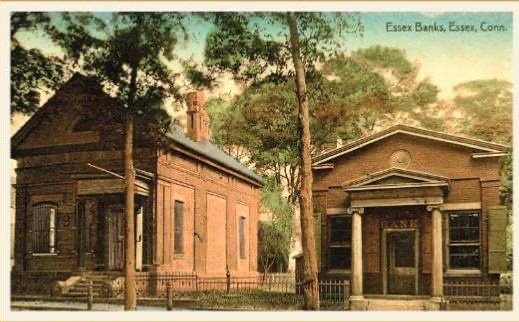
40. 1 Main Street. Built 1880 and housed the Hall’s Store.
41. Essex Square. Shoreline Electric Railroad Company, started service from Old Saybrook in 1910, routed through Essex Main Street, and extended up North Main Street, past the Dickinson Offices. The trolley line extended north and west through Centerbrook, Ivoryton, Deep River, and Chester.

42. The Talbots building and adjacent buildings were once the Benjamin William Jr. Homestead, 1814. Originally there was a small two story house at the top of the old rope walk. In 1925, the Essex Square Theatre was built, to present motion pictures and house offices in the rear.
43. 3 & 5 Essex Square. Miner Block; Samuel Ingersoll Building; Benjamin Williams Jr. House. The two buildings facing the square have housed Essex pharmacy, an Oyster House and other businesses. A large structure for its time, it was built as a store complex in 1835 by Elias Redfield and joint owned by Elias Parmalee in 1842. Albert Miner purchased the business property in 1871, and built an elegant house behind it on Prospect Street. Thus, the commercial structure was known as "Miner's Block," the site of the 1874 oyster house. Miner took on a clerk named Charles Mather, who later became his son-in-law and took over the business as Mather's Store through the early part of the 20th century, specializing in hardware and appliances, later becoming an early home of Essex Hardware. The upper floors of the multi-level structure saw a number of uses come and go, such as a school room, various apartments and for decades, the third floor served as the meeting hall of the local Odd Fellows chapter and the Freemasons.
44. On North Main Street is the Arkin Block, built by Jacob Arkin, 1919, at one time housed a grocery store and other shops.

45. Farnham Parmalee house. 12 North Main Street in Essex, was originally located about 150 feet south of its current location. Built by Farnham Parmelee in 1818, it was purchased by Jacob Arkin in 1919, who moved it to make way for the Arkin Block, a brick commercial building.
46. site of second Ropewalk.

47. After the second ropewalk was destroyed by fire, this commercial building was moved to this location. It has housed several businesses, including a shoemaker, flower shop, and clothing store.
48. Baptist Church Conference Hall, 1837. This building was built just below the brick Baptist House on Prospect Street. When destroyed the local Point school, located where the Essex Savings bank now stands was mysteriously destroyed by a gunpowder explosion, the Baptists sold the building to the Town to house the school in 1845. It operated as a school until 1910. This is now the home of the Essex Art Association.
49. Samuel Lay House. Built in 1754 by Samuel Lay, the son of Robert Lay, Jr., the house at 17 North Main Street in Essex was altered the nineteenth century to conform to the popularity of the Greek Revival style. In 1924, the house was purchased and again altered by E.E. Dickinson, Jr.
50. Smith-Dickinson House. In 1841-1842, Charles Whitmore Smith, a merchant, built a Greek Revival house on North Street in Essex. In 1888, the house was purchased by Edward E. Dickinson, whose E.E. Dickinson Company dominated the nation’s production of witch hazel. The company was started in 1866, when Rev. Thomas Newton Dickinson saw an opportunity to bring the benefits of witch hazel to the general public. Born and raised in New England, Thomas Dickinson understood the powerful healing properties of the native plant, which was used by Native Americans. He opened his first distillery, bottling witch hazel in Essex Village on Prospect Street.
E.E. Dickinson wintered in Florida, where the wealthy community of Palm Beach was being developed at the time. In 1927, Dickinson enlarged and remodeled his house in Essex to resemble Whitehall, Henry Flagler’s famous mansion in Palm Beach. The house was owned by the Dickinson family from 1888 to 1971. It was originally built in the Greek Revival style, with a one story porch wrapping around the front. In 1927, the house was dramatically enlarged. The immediately adjacent Braddock property was demolished to allow for the expansion of the house. The columns were added and garage areas were added.

52. Walcott Pratt Homestead. Opposite the Dickinson Mansion. Once all Lay land, this house was built in 1796, when Wilco’s Pratt married Wolcott Pratt.
53. E.E. Dickinson offices. In 1865, the land and a store located here was purchased by the Dickinson Family. The store was moved to Plains road in 1925, and the current Dickinson Office building was built by E.E. Between 1898 and 1902, the storage (and bottling) building was built by the railroad depot in Centerbrook, and the brick factory on the other side of the tracks was purchased. His son, E. E. Dickinson, Sr., succeeded him, and was responsible for the huge growth of the company. By 1914, there were more than 6,000 barrels of witch hazel stored in Essex. Photos of 1911 show the trolley tracks running past the old office.

54. Next to it are the Dickinson garages, 1925 The family owned much of the land on North Main, including well past the River View cemetery, and including the cemetery itself.
Dickinson Park.
1 note
·
View note
Text
A History of Simon’s Town
Simon’s Town - a name that every Capetonian knows. It is a stunning place to spend an afternoon as well as an ideal place for a weekend getaway - but what remains is the love that Capetonians have for this historic ocean-side village.
[caption width="800" align="aligncenter"]

Simons Town[/caption]
Seeped in history, Simon’s Town has always attracted tourists and locals to spend a day exploring the hidden shops, cafes, museums, restaurants and beaches. People travel from all over to learn a little more about the history and to see the penguins - of course.
The town was named after Simon van der Stel and called Simon’s Bay.
Simon’s Town was made the official winter anchorage for the Dutch East India Company’s ships in 1741, and its harbour served as a refuge for merchant ships and whalers.
[caption width="800" align="aligncenter"]

History of Simons town[/caption]
The Governor-General of the Dutch East Indies who arrived in the same year chose a site for a magazine, hospital and barracks in Simon’s Town.
A small garrison was stationed here, and when a stone pier was constructed in 1768, a baker, a slaughter-house, carpenter’s shop and smithy were built as well as a residence for the Governor.
The British Royal Navy took this over in the 1790s, and the facility was further developed over the following century and a half.
[caption id="attachment_92717" align="aligncenter" width="800"]

Old Simons Town[/caption]
As time went on - the site was developed gradually - with steam engineering and coaling facilities being added.
In 1885, the Cape Colony government transferred the assets of the Simon’s Town Dock and Patent Slip Company to the British Admiralty. By the close of the century, it became clear that more space would be needed to accommodate a modern Navy’s requirements.
A large site was acquired to the east of the original yard to be used for dockyard extensions with construction beginning in 1900.
The new harbour contained a drydock as well as a sizeable steam factory constructed alongside.
The drydock was named the “Selborne Graving Dock” after the Earl of Selborne, the Cape High Commissioner.
The Naval Base was handed over to the South African Navy in 1957.
[caption id="attachment_92675" align="aligncenter" width="800"]

Simons Town Harbor[/caption]
Some of Simon’s Towns Landmarks
Just Nuisance
[caption id="attachment_92682" align="aligncenter" width="893"]

Historic Monument [/caption]
The life and story of the legendary Great Dane, Able Seaman Just Nuisance, continues to capture visitors’ hearts and imagination to Simon’s Town.
Simon’s Town Museum
[caption id="attachment_92689" align="aligncenter" width="800"]

Historic Museum Simons Town[/caption]
The museum is housed in “The Residency” which was built in 1777 as the winter residence for the Dutch East India Company Governor at the Cape.
The museum was established in 1977 by the Simon’s Town Historical Society. The building has a long history having been used as a hospital, post office, school, customs house, police station, jail and magistrate’s court.
Simon’s Town Museum collects and exhibits the cultural history of the people of Simon’s Town and their connections to the Dutch East India Company and the Royal Navy.
SA Naval Museum
If you are interested in Ships and Submarines, their weapons, their equipment, the people who serve, and served in them - this one is for you!
[caption id="attachment_92696" align="aligncenter" width="800"]

Historic Naval Museum[/caption]
The SA Naval Museum is housed in, and around, the original Dockyard Magazine/Storehouse, which from 1810 when the Royal Navy moved its headquarters from Cape Town to Simon’s Town, was extended to become the three-storey building it is today.
Warrior Toy Museum [caption id="attachment_92710" align="aligncenter" width="800"]

Historic Toys[/caption]
When visiting the Warrior Toy Museum, you will see a permanent display of model cars, dolls, dinky toys and more. The model car section houses 4000 cars and with over 500 dolls and teddy bears - you will plenty to ooh and aah over.
This is a beautiful sanctuary for collectors of toy aeroplanes, trucks, lead soldiers, cars and busses. There is a sales section for both existing collectors and budding collectors.
Other exciting things to see are the two fully operational railroads, Meccano, various other toys and models, ships and even a lead soldier display.
Warrior Toy Museum have a collection that will have you reminiscing.
Delve into the heart of the Muslim community’s heritage by visiting the Heritage Museum.
A visit to the Heritage Museum will understand the rich Cape Malay cultural influence and history of the region.
The museum is housed in the Amlay house, the original home of the Amlay family, removed in 1975 after Simon’s Town was declared a whites-only area under apartheid law.
After the advent of democracy, the Amlay family returned to Simon’s Town, and a family member established the museum and curates it exhibitions today.
[caption id="attachment_92703" align="aligncenter" width="696"]

Old Harbor Simons Town[/caption]
When visiting the museum, you can expect to learn more about the early residents of Simon’s Town and Cape Malay heritage and the Muslim culture’s intricacies.
Simon’s Town also offers an incredible in-depth walking history tour, including the Cape Malay Museum to discover how slavery shaped the Cape. The tour is geared towards helping you reflect on the past and the Cape’s present social and political context.
Why not step back in time and explore the beautiful museums and heritage sites that Simon’s Town has to offer - this can be a self-drive adventure, made easier by renting a car from a reputable car rental company.
Enjoy the Adventure.
https://www.drivesouthafrica.com/blog/a-history-of-simons-town/
0 notes
Text
Greensboro NC
Greensboro NC is a historic city in the state of North Carolina. The Greenville Science Center houses a giant hands-on exhibit featuring a red panda, sharks and two red pandas. Nearby, the Guilford Courthouse and International Civil Rights Museum both contain exhibits on the civil rights movement.
The Bog Gardens is an area of greens, swamps and trees surrounded by ponds. The museum displays life-size models of civil rights heroes including Martin Luther King, Rosa Parks, Roy Wilkins, Jimmie Lee Jackson and Coretta Scott King.
There are also Museum exhibits on the history of Greensboro. Some of the exhibits include the historic Dixie River. It was used as a route to the Union army's headquarters during the Civil War.
The Central Railroad Museum is dedicated to the Central Railroad, a major rail line that operated throughout the city of Greensboro. The museum includes information about the railroad such as its history and the train's routes.
The museum is also known for displaying many natural features in Greensboro NC. It houses a dinosaur zoo, waterfalls, an aquarium, an observatory and botanical gardens. The museum also showcases a collection of Native American artifacts.
A trip to Greenville NC for a relaxing getaway is well worth it. The city offers beautiful attractions and historical sites. The museum is an example of how museums can be a great way to learn about history and educate yourself.
If you love animals, you'll find that there is ample opportunity to see the local wildlife in Greensboro NC. The Guilford County Zoo is home to many different types of animals including several species of whales and dolphins.
The Zoo's theme park is also great fun. The park is divided into three sections; one for kids, one for families and one for adults. The family section has exhibits include slides, a jungle gym, an obstacle course and a petting zoo.
The kids section has the zoo train and the monkey house. The family section has activities such as building sand castles and a bounce house. You can also view the animals in the Petting Zoo.
The zoo features activities for children and adults alike. They include a swing set, playhouse, slides and a slide show. In addition, the children's section has an activity called the dinosaur zoo. This park features a variety of prehistoric animals.
One of the best attractions at the zoo is the dinosaur ride. The dinosaur has four seats that are elevated above the ground and it also travels around the track.
The Greenville NC is also home to many museums. The Greenville Museum of Art is the oldest in North Carolina and is home to art from all over the world.
The museum is also known as the Center of Modern Art. It is home to more than 50 works by prominent artists such as Rembrandt Harmenszoon van Riel, James Joyce and William Blake. The Art Gallery contains works by local and internationally famous artists including Thomas Moran, Edward Cazeau and Robert Rauschenberg.
The museum is also one of the only places in the country to view original works of art from the South. These paintings and sculptures are considered rare and are protected under the law of the United States. You can view these pieces through the National Parks' Interpretation Program.
The National Zoo is another major attraction in Greensboro NC. This zoo houses a variety of animals and birds. The zoo is also home to many different types of species including the polar bear, the leopard gecko and the African giraffe. The zoo also includes two big cats, a hippopotamus and an orangutan.
The zoo is not only about animals but also has some educational activities for children. There are a penguin farm and an aquarium where you can watch a number of exotic animals such as the orangutan and the penguin.
Greensboro NC is a great place to visit. You can see and do many things while you are there. Whether you want to see the zoo, enjoy a day at the zoo or even go on a car trip around the area, this city offers it all.
0 notes
Text
Statue For Black Abolitionist Frederick Douglass in NY State Beyond Repair After It Was Ripped Down By Vandals
In a speech in 1852, Douglass made a case against celebrating July 4th by African-Americans, saying: “The blessings in which you, this day, rejoice, are not enjoyed in common. This Fourth July is yours, not mine. You may rejoice, I must mourn."
— 6 July, 2020 | RT

African-American abolitionist Frederick Douglass (c1818-1895) © Global Look Press
A statue for Frederick Douglass, a former slave who became a prominent civil rights advocate, has been torn down from its pedestal in Rochester, New York. The damage to the monument is reportedly too significant to repair.
The statue was vandalized over the July 4th weekend, Rochester police told local media on Sunday.
Photos from the scene show an empty spot where the statue used to stand in Maplewood Park, as well as its debris scattered in the vicinity. The statue was lying 50 feet from its pedestal when officers found it.
Ben Densieski (@BenDensieski):
The base of a Frederick Douglass statue torn down overnight here in Maplewood Park. Bits of the statue scattered around the area. @News_8



Frederick Douglass statue torn down on anniversary of great speech. Statue of abolitionist, which stood on site of Underground Railroad in Rochester, New York, found damaged by unknown perpetrators
The statue "had been placed over the fence to the gorge and was leaning against the fence," police said in a statement, as cited by The Democrat and Chronicle daily.
Carvin Eison, director of the ‘Re-Energizing the Legacy of Frederick Douglass’ project, said the monument is beyond repair and will need to be replaced.
"It's particularly painful that it happened at this time," he said.
Dozens of statues have been knocked off their pedestals across the country in a monument-toppling spree championed by Black Lives Matter activists, which see it as a way of reckoning with the nation’s troubling legacy of slavery and racism. While the initial targets of the protesters were Confederate generals, later vandalism, which met little resistance from law enforcement, saw the statues of Christopher Columbus and other historical figures being removed as well.
It’s so far unclear who was behind the Douglass statue incident.

Frederick Douglass, c1866. Photograph: Granger/REX/Shutterstock
The monument, inaugurated in 2018 to mark Douglass’ 200th birthday, is part of a city-wide installation consisting of 13 statues – all replicas of a larger statue of Douglass, which was unveiled in Rochester’s Highland Park neighborhood in 1899. The statues were placed throughout the city in places of significance to the abolitionist’s life in a bid to bolster his legacy.
In a speech in 1852, Douglass made a case against celebrating July 4th by African Americans, saying: “The blessings in which you, this day, rejoice, are not enjoyed in common. This Fourth July is yours, not mine. You may rejoice, I must mourn.”
National Museum of American History (@amhistorymuseum):

“The rich inheritance of justice, liberty, prosperity and independence, bequeathed by your fathers, is shared by you, not by me. The sunlight that brought light and healing to you, has brought stripes and death to me. This Fourth July is yours, not mine" — Frederick Douglass, 1852
It’s not the first time the installation has been targeted by vandals. In December 2018, two students from Rochester’s St. John Fisher College were arrested and charged with misdemeanors after they were filmed dismantling one of the statues and stealing it. The students claimed they were drunk and later apologized, calling what they had done to the statue “a terrible thing,” and offered to help repair the monument.
0 notes
Text
Best Places to Celebrate BLACK History

As we all know, there is an enormous controversy taking place right now, and many people are filled with rage, anguish, distress, grief, and an overabundance of responses that have developed due to current circumstances. Many lives were lost over the years, may it be during the Civil Rights era with historical figures like Martin Luther King, Jr or George Floyd from more recent times, these lives should not have died in vain. The phrase ‘Black Lives Matters’ associates with racism, minoritism, separatism, or many other -isms’, and thousands of people protested from the USA, UK and all across the globe, within the ‘Black lives matter’ movement, lining the streets for racial equality and to pay tribute to the people who lost their lives. We should open our minds to be part of this movement, and never stop supporting this cause as it’s far from over. The perfect start to that is to learn the beauty of the black culture and endure their rich history, and there is no better way to experience this in the best places to celebrate BLACK history in the USA.
What are the Best Places to Celebrate BLACK history and culture?
Many people in the USA and around the globe are encouraged to marvel on monuments, tour museums, and historical sites, that’s dedicated to the contributions and tributes of Blacks, from war service, slavery and cultural significance. These foundations promote knowledge while praising the lives of Black Americans. Consider making a trip to the best places to celebrate black history where you can learn about African American heritage in the USA.
National Museum of African-American History and Culture

Introduced in November 2016, the Smithsonian museum in Washington is an exclusive national museum dedicated exclusively to African-American life, history, and culture, and is a wonderful place to celebrate black history. Articles on exhibition include Chuck Berry’s Cadillac, Harriet Tubman’s prayer shawl, and protest signs from the Black Lives Matter movement. It also showcases narratives and points of the rest of the museum, to give visitors a taste of traditional meals from the diaspora at the Sweet Home Cafe.
The Mississippi Civil Rights Museum and The Museum of Mississippi History

These museums endeavours a significant look at the state’s interesting history, especially during the time of Jim Crow exclusion laws in the 20th century. The Civil Rights Museum, in particular, shows how Mississippi frequently served as a prime organizing ground for the movement. Rallies such as the ‘Freedom Rides’, ‘Black Lives Matter’ and other forms of revolution against discrimination often started in Mississippi, making this one of the best places to celebrate black history.
African Meeting House
The African meeting house was a place of worship and was built in the early 1800s, situated in Boston’s Beacon Hill neighbourhood, is one of the oldest historically Black churches in the country, and an ideal place to place to celebrate black history. The meeting house served as a church, school, and meeting place where members of the Black community in Boston held gatherings during the abolition of slavery movement in the 19th century.
Historic Flatbush by the Municipal Arts Society
Get to know one of most historic black neighbourhoods, in Brooklyn Flatbush. A significant place where one can celebrate black history with art at the Municipal Art Society of New York. Traversing the transformation of the area from rustic to a “concrete jungle.”
Beale Street Historic District
This neighbourhood in Memphis is the birthplace for some of the most enjoyable jazz, blues, and R&B music. Great musicians such as Louis Armstrong, B.B. King, and Muddy Waters played at famous clubs.
Harrison House
This place is a wonderful place to celebrate black history. Harrison House, was built in 1942, was one of many boarding houses that Sammy Davis Jr, Pearl Bailey, Nat King Cole, Eddie “Rochester” Anderson and other black entertainers were hosted and worked in Las Vegas casinos.
Museum of the African Diaspora
The Museum of the African Diaspora is located in San Francisco Bay area and plays an essential role in the local arts community. The museum is placed as one of the few museums in the world centred solely on African Diaspora culture and on conferring the deep cultural heritage of the African people and descendants around the world.
Harriet Tubman Historical Park

Harriet Tubman was a slave who became a leader of the ‘Underground Railroad’, and one of the most iconic women in history. The land encircling her home in upstate New York was named a national park in 2017, securing its legacy. What makes her special is that she would go back many times after escaping slavery to help other slaves gain freedom, showing us that this is one of the best places to celebrate black history.
Read More:- https://blog.travelcenter.uk/best-places-to-celebrate-black-history/
This Article, Information & Images Source (copyright) :- https://blog.travelcenter.uk
#travel#travelcenteruk#travelvibes#wanderlust#traveller#travellife#travelgoals#bestplacetotravel#Holidaymakers
0 notes
Text
A Notorious 17th-Century Pirate, the Many Lives of the Louvre and Other New Books to Read
https://sciencespies.com/nature/a-notorious-17th-century-pirate-the-many-lives-of-the-louvre-and-other-new-books-to-read/
A Notorious 17th-Century Pirate, the Many Lives of the Louvre and Other New Books to Read

When Captain Henry Every and his crew of marauders ambushed the pride of the Mughal fleet in September 1695, they set in motion an international crisis with lasting implications. As Steven Johnson, author of The Ghost Map and How We Got to Now, writes in Enemy of All Mankind: A True Story of Piracy, Power, and History’s First Global Manhunt, Every’s capture of the Ganj-i-Sawai—and its trove of an estimated $200 million in gold, silver and jewels—led the British East India Company to take harsh retaliatory measures. In doing so, Johnson argues, the corporation and Every inadvertently sparked the birth of a modern phenomenon: multinational capitalism.
The latest installment in our “Books of the Week” series, which launched in late March to support authors whose works have been overshadowed amid the COVID-19 pandemic, details the search for Every, the many lives of the Louvre, the Montgomery bus boycott, the humans behind history’s greatest firsts and a titan of industry’s ideological clash with Theodore Roosevelt.
Representing the fields of history, science, arts and culture, innovation, and travel, selections represent texts that piqued our curiosity with their new approaches to oft-discussed topics, elevation of overlooked stories and artful prose. We’ve linked to Amazon for your convenience, but be sure to check with your local bookstore to see if it supports social distancing-appropriate delivery or pickup measures, too.
Enemy of All Mankind: A True Story of Piracy, Power, and History’s First Global Manhunt by Steven Johnson

By all accounts, the Ganj-i-Sawai should’ve emerged victorious against the Fancy, a comparatively underequipped privateer ship. But luck was on Every’s side when the vessels met, and as Kirkus notes in its review of Enemy of All Mankind, Grand Mughal Aurangzeb’s flagship experienced a cannon misfire “even as a lucky shot from the pirate fleet took down the main mast.” Upon boarding the Ganj-i-Sawai, Every and his crew raped its women, tortured and murdered its men, and looted its treasure trove of goods.
The incident left the East India Company—and its trading interests in the Asian country—in a challenging position. Accused by Aurangzeb and his followers of hailing from a “nation of pirates” simply because Every was also British, the company teamed up with the crown to launch what Johnson deems the “first global manhunt.” Ultimately, the search proved only partially successful. Every escaped the hangman’s noose, though several of his comrades were captured and executed.
Despite this apparent failure, Johnson argues that the manhunt ushered in a much-needed reckoning between a soon-to-be outdated mode of money-making (autocracy funded by tithes, taxes and other forms of exploitation) and the way of the future: “a multinational corporation making money by trading goods with other nations, with shareholders profiting not just from the income generated, but also by the rising share price of the company itself.”
The Louvre: The Many Lives of the World’s Most Famous Museum by James Gardner

The Louvre is perhaps best known today as the home of Leonardo da Vinci’s Mona Lisa. But the palatial complex boasted a rich history long before the world’s most famous painting graced its walls. As James Gardner writes in his extensive exploration of the Parisian cultural institution—which he deems “as great a work of art as anything it contains”—the Louvre’s story actually stretches back some 7,000 years. “Before the Louvre was a museum,” the art critic explains in the book’s introduction, “it was a palace, and before that a fortress, and before that a plot of earth, much like any other.”
In 1191, French king Philippe Auguste ordered the construction of a defensive stronghold on the banks of the Seine River. Thousands of years earlier, according to Gardner, the site had served first as a campground and then as the home of a clay quarry and vineyard. During the 13th century, Charles V converted the fortress into a castle, laying the foundations for 16th-century king Francis I’s adoption of it as his main residence. But when Louis XIV chose Versailles as the main royal palace in 1682, the Louvre underwent a century of neglect. Finally, in 1793, the property assumed the role it holds to this day, opening as a public museum filled with art and artifacts—the majority of which were seized from France’s nobility amid the chaos of the French Revolution.
Writes Gardner, “What we see today is the result of no fewer than twenty distinct building campaigns that drew on the very diverse and unequal talents of scores of architects over eight centuries.”
Daughter of the Boycott: Carrying On a Montgomery Family’s Civil Rights Legacy by Karen Gray Houston
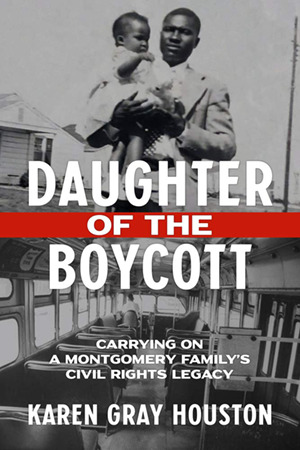
Fred and Thomas Gray played pivotal roles in the civil rights movement, aiding the organization of the Montgomery bus boycott and battling segregation in court, respectively. In Daughter of the Boycott, journalist Karen Gray Houston reflects on her relatives’ legacy, detailing how her father, Thomas—a founding member of the Montgomery Improvement Association—“drove his car to pick up black passengers to keep them off the buses [and] make the boycott a success,” while his younger brother, Fred, spearheaded legal cases that expanded voting rights and “desegregated transportation, schools, housing, and public accommodations.”
In addition to discussing her father’s and uncle’s work, Houston draws on interviews with individuals including the daughter-in-law of the manager whose bus line was targeted by protesters and the son of Aurelia Browder Coleman, lead plaintiff in the Browder v. Gayle Supreme Court case that resulted in the desegregation of Montgomery’s buses. According to Kirkus’ review of Daughter of the Boycott, Houston’s “real coup” is a conversation with fellow Browder plaintiff Claudette Colvin, who refused to yield her seat to a white passenger nine months before Rosa Parks famously did the same.
Who Ate the First Oyster?: The Extraordinary People Behind the Greatest Firsts in History by Cody Cassidy
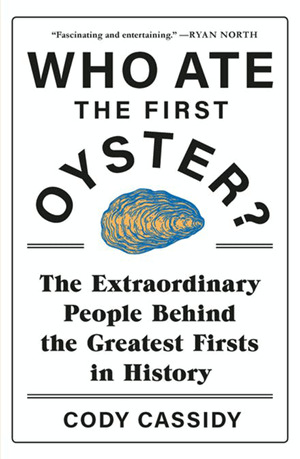
To gain a better understanding of the individuals behind history’s “greatest firsts,” science writer Cody Cassidy interviewed more than 100 experts, started a fire with flint and pyrite, shaved his face with a piece of obsidian, and brewed beer using spoiled gruel. This unconventional research method ultimately yielded insights on 17 historical innovators whose accomplishments range from eating the first oyster to discovering soap, painting the world’s first masterpiece, inventing clothing and performing the first surgery.
Among the many curiosities highlighted in the book: The first person whose name survives in the historical record is an accountant named Kushim who lived some 5,000 years ago. A young Australopithecus mother crafted the world’s first invention—a baby sling—approximately three million years ago. And the creator of clothing, a Homo sapien the author nicknames Ralph, invented fashionable attire not for protection, warmth or modesty, but as decoration.
Cassidy’s sweeping exploration is limited by the simple fact that the individuals featured “lived before or without writing.” Still, he writes in the book’s introduction, “These are people who scholars know existed and whose extraordinary or fateful acts are the foundation of modern life.”
The Hour of Fate: Theodore Roosevelt, J.P. Morgan, and the Battle to Transform American Capitalism by Susan Berfield

As Publishers Weekly notes in its review of journalist Susan Berfield’s debut book, Theodore Roosevelt and financier J.P. Morgan both hailed from upper-class families and endured childhoods marred by illness. Despite these similarities, the pair vehemently disagreed on political and economic issues: Whereas Roosevelt argued that big business “had to be accountable to the public,” according to Berfield, Morgan believed capitalism should operate unchecked by all except titans of industry.
These conflicting views came to a head on September 14, 1901, when President William McKinley’s assassination made his vice president, Roosevelt, the United States’ new commander in chief. Roosevelt and Morgan, who at the time was among the richest men in the nation, viewed each other with distrust and uncertainty. When Morgan reportedly said, “I am afraid of Mr. Roosevelt because I don’t know what he’ll do,” the president replied, “He’s afraid of me because he does know what I’ll do.”
The Hour of Fate’s main action unfolds in 1902, when the government accused Morgan’s Northern Securities of antitrust violations, only to be stymied by a coal mining union strike that left both the railroad industry and the country, which relied on coal to heat its citizens’ homes, in a precarious position.
Writes Berfield, “With millions of dollars on the line, winter bearing down, and revolution in the air, it was a crisis that neither man alone could solve.”
#Nature
0 notes
Text
Top 10 Historic Houses in Canada
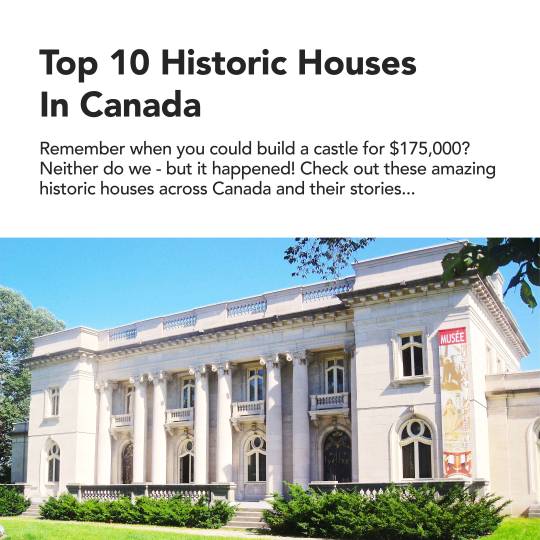
When visiting another country, it's always nice to see some of the historic and beautiful places it has to offer. You should take time to visit these places not only to appreciate the country even more, but also to learn more about it. And there are no other places more historic or more colorful than houses in which history happened.
10 Historic Houses In Canada
Canada is one of the most historic and colorful countries in the world. Everywhere you go, you'll find a place worth visiting. However, there are some places that are more worth visiting than others. Here are some of the houses that you should take time to visit:
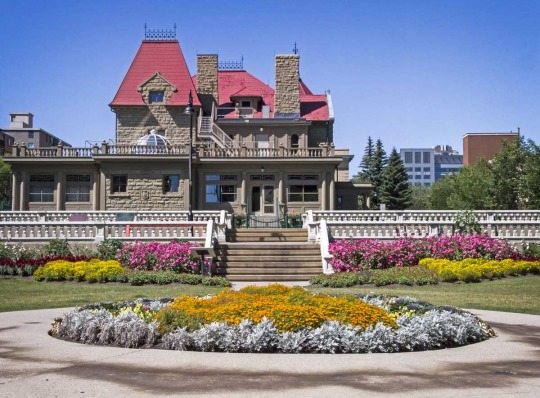
1. Lougheed House
This place was first known as "Beaulieu", which means "beautiful place" in French. It's in Calgary, Alberta's Beltline district, and is a national historic site.
The Lougheed House Conservation Society are the ones who manage the place. It is a non-profit and an independent society that devotes itself to restoring the house and allowing the public to enjoy it.
Senator James Alexander Lougheed built the mansion back in 1891, for his wife Isabella Hardisty Lougheed. Together with their first two sons, Clarence and Norman, they moved into the house. After their move, they had four more children: Edgar, Dorothy, Douglas, and Marjorie.
The family expanded the house in 1907, in order to accommodate their growing family, as well as their increasing amount of acquaintances and friends. They made the house according to the municipal building code, because of the Calgary Fire in 1886.
For the most part, the Lougheed House was a residential place, a military barracks for women, blood donor clinic, and a women's training centre. However, preceding the year 2000, the house was empty, yet cared for. On that year, however, new restoration of the house began.

2. Henry House
The house can be found on Halifax Regional Municipality's Barrington Street. It's a two-and-a-half-storey property, and has been appointed as a National Historic Site of Canada. Under the Heritage Property Act of the province of Nova Scotia, the property is a Municipal Registered Property and a Provincially Registered Property.
Henry House was originally built for John Metzler back in 1834. He was a wealthy landowner and Halifax stonemason. The property is originally known as a house associated with William Alexander Henry, a native of Halifax who stayed with the Metzler family from 1854-1864.
Henry was very prominent back in the day, because he was a Father of Confederation. He was also the co-author of the British North America Act, a Mayor of Halifax, a provincial Attorney General, and a Member of the Nova Scotia House of Assembly. Henry served as Supreme Court of Canada's justice, and was the first Nova Scotian to ever do so.
During the late 19th and early 20th Centuries, the property was a Sailors' Home. The Navy League of Canada operated the property during that period.
Jacques Ducau and Richard (Dick) Raymond bought the property back in 1968. In 1969, the duo renovated the property, opening a restaurant and downstairs tavern inside. Little Stone Jug was the tavern, and the restaurant was deemed The Henry House.
The restaurant is still in operation today, but is now known as The Henry House Restaurant & Pub. In 1969, the property was appointed a National Historic Site.

3. Earnscliffe
The Victorian manor that was built in the style of the Gothic Revival can be found in Ottawa, Ontario. It was the house of Sir John A. Macdonald, the first Prime Minister of Canada. However, since 1930, it has become the house of Canada's British High Commissioner.
The company of Thomas McKay were the ones who built the property. It was built in 1855 for John McKinnon, McKay's son-in-law. In 1866, however, McKinnon suddenly died, and Thomas Keefer, McKay's other son-in-law, bought the property.
After two years, Keefer sold the property to a railroad developer, Thomas Reynolds. He stayed in the property for a couple of years. During his stay, the property got the name "Earnscliffe", which means "eagle's cliff".
In 1879, Reynolds died, and in 1883, Sir John A. Macdonald bought the property from Reynolds's son. During an earlier time, Macdonald had stayed with Reynolds. According to rumors, Macdonald was the one who gave the property its name. Macdonald made renovations to the property, and even added several rooms in 1888. He got sick and died on the property in 1891.
His widow, Lady Macdonald, briefly continued to reside in the home after his death, and Queen Victoria made her Baroness Macdonald of Earnscliffe. Soon, however, Lady Macdonald and her daughter departed for England, and leased the house to Lord Treowen, commander of the militia. Over the next decades, the building was home to several local notables, including Mrs. Charles A.E. Harriss.
Afterwards, William Henry Clark, Canada's first British High Commissioner, bought the house in 1930. And ever since, the property has been the British High Commissioner's house.

4. Dundurn Castle
If you're stopping by Hamilton, Ontario, Canada, then Dundun Castle is a must-stop. It's an 18,000 sq.ft. historic neoclassical mansion. The house cost $175,000 to build, and was finished in 1835. At the time, though, the house had the latest conveniences - such as running water and gas lighting!
The City of Hamilton is now the owner of the property, who purchased it for $50,000 in 1899. In order to make the property open to the public, the City has renovated it for almost $3 million. All of the rooms have been restored to how they looked back in 1855, when Sir Allan Napier MacNab owned it. Costumed interpreters are there to guide those who visit the house. A descendant of Sir Allan MacNab, the Duchess of Cornwall, is the Dundun Castle's Royal Patron.
Robert Charles Wetherell was the architect who built the house, completing it in 1835. Richard Beasley was the original owner of the house - however, due to financial problems, he was forced to sell it. He was one of the early settlers of Hamilton. MacNab built the house's foundation on the brick home of Beasley.
Once the house was finished, it became known for its grand entertainments all over Canada. King Edward VII and Sir John A. MacDonald are just a few of the people who have been to this historic house.
When MacNab died, the property became an institution for deaf mutes. In 1872, Donald McInnes bought the property. Later on, he would sell the property to the City of Hamilton. It was renovated, restored and appointed as a National Site of Canada.

5. Sir George Etienne Cartier House Museum
Another of Canada's National Historic Sites is the house of Sir George-Étienne Cartier. The place is now a historic house museum, commemorating Cartier's life and accomplishments. Nowadays, the house also has other adjoining houses, which features the architectural heritage of 19th-Century Montreal’s middle class.
The house is made up of adjacent houses: the 'west house' and the 'east house'. These houses were separate at first, but now they form one building. The 'west house' portrays the Cartier family's way of life during the 1960s, and an exhibit can be found on the 'east house' which showcases the life of Sir George-Étienne Cartier. Sir George-Étienne Cartier was a prominent man of his time, as a politician and a middle-class Montrealer.
Sir George-Étienne Cartier House showcases the work and career of one of the Fathers of Confederation. It's also a great example of a neoclassical building that went through modifications.
The house museum can be found on the northeast edge of the Old Montreal district. It was appointed as a Canadian National Historic Site in 1964. The house was recognized because of the architectural importance and historical value.

6. Park House Museum
When you go to Amherstburg, Ontario, Canada, then you should go to Park House Museum, a historic house museum that was built in Detroit in 1796. However, in 1799, it was moved to Amherstburg.
The house has had plenty of owners, but only the Park Family is widely-recognized. The Park Family lived in this house for 102 years.
The Rotary Club of Amherstburg would buy the property in 1972. It was renovated, and became a local history museum, portraying how it was in the 1850s.
Park House Museum was built by a British loyalist near the Rouge River in 1796. The owner went to Malden when the American Revolution was over. Two years later, in 1798, it was disassembled and moved, with the help of a canoe. The property was built back up again in Amherstburg on the 17th Lot, Dalhousie St., and it would stay there for the next 173 years.
Through a draw, the lot was awarded and given to Leigh, Duff, and Shepherd. Captain Hector McLean, Fort Malden's Commanding officer, chose to give it to Nancy, a schooner, instead. Nancy's owner held the property.
In 1817, the property was bought by Alexander Mackintosh. Soon after, however, in 1823, Jean Baptists Macon bought the property. Macon, who was a famous merchant, hired the Park brothers as clerks - and in 1839, Thomas F. Park bought the house. He lent it to Theodore Jones Park, Thomas's younger brother.
After Theodore Jones Park died, John R. Park, his younger brother, bought the property. The son of Theodore, Dr. Theodore James Park, lived in the house after that. And when he died, Lizzie, his sister, owned the property.
The property changed hands multiple times afterwards. Nowadays, though, it's educating everyone about day-to-day living in the 1850s. The Park House Museum was appointed as a National Historic Site on October 4, 2018.

7. McCrae House
One of Canada's Historic Sites is the McCrae House. It can be found in the birthplace of John McCrae in Guelph, Ontario. John McCrae is a soldier, doctor, and the author of "In Flanders Fields".
McCrae House is a small limestone cottage that is owned by the McCrae family. It was first built in 1858, and the McCrae family stayed there from 1870 until 1873. The property changed hands multiple times, until a group of Guelph citizens bought it in 1966. They created the Lt. Col. John McCrae Birthplace Society, and raised money to restore the house.
Every year, the house offers a different theme. It has temporary and permanent exhibition spaces, which showcase the life of John McCrae. The house was appointed as a place of national significance by the Historic Sites and Monuments Board. John McCrae was also appointed as a person of national significance.
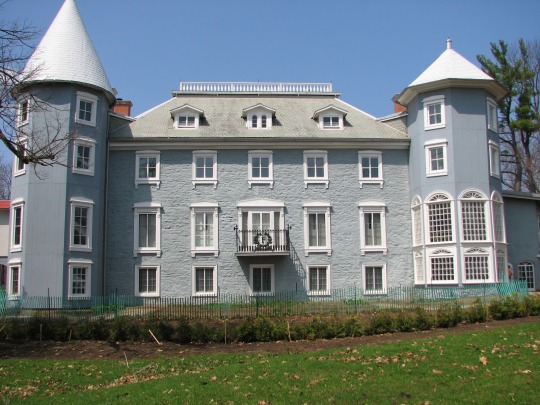
8. Manoir Papineau
The Papineau family stayed in the Manoir Papineau from 1850 to 1929. Manoir Papineau is now being operated by Parks Canada. In 1993, Parks Canada were appointed as its custodians, and they opened it to the public.
Manoir Papineau is considered to be one of the Ottawa River region's most important heritage locations. The property was built to remember Louis-Joseph Papineau, who was one of the leading politicians of the 19th Century, and was the first leader of the French-Canadian nationalists. Later on, he became La Petite-Nation's first seigneur.
The house was built when Papineau came back to Canada, after he had been exiled to Europe. And he and his family lived here, in the house, until he died. Generations of his family continued to live in the house until the 1920s.
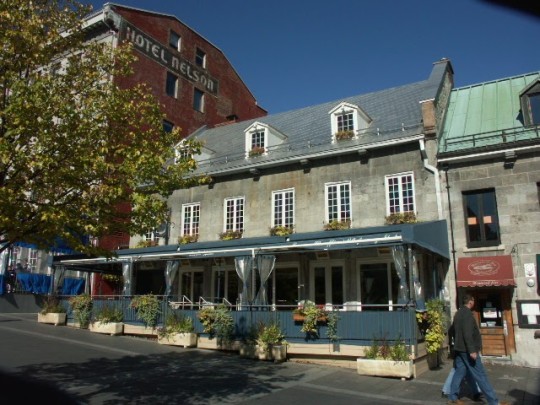
9. Maison Cartier
One of the most historic houses in Montreal is Maison Cartier. In Old Montreal, you can find the Maison Cartier, which is also appointed as a Canadian National Historic Site. It was appointed as a National Historic Site back on November 19, 1982.
The Maison Cartier was built from 1812 to 1813. Amiable Amiot dit Villeneuve, a mason, and Antoine Bouteiller, a carpenter, constructed the house. The walls and the dormers on the roof are made of ashlar. They are great examples of the 19th Century's urban architecture of Quebec. Augustin Perrault and Louis Parthenais were the first owners of the Maison Cartier.
Maison Cartier can be found in one of the most colorful areas in Montreal, The Village. Its interior design is heavily inspired from Art Deco's style and elegance. Each room has its own terrace or balcony, allowing you to enjoy the view of the city. If you want to enjoy Montreal, then you should definitely visit Maison Cartier.
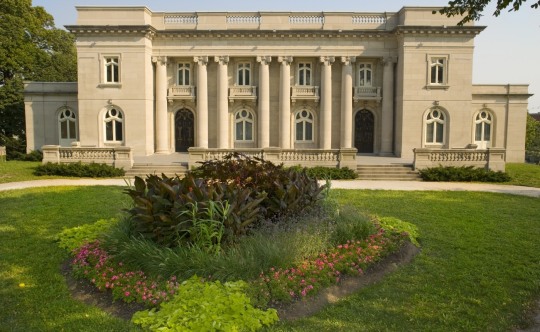
10. Château Dufresne
One of the most historic places in Canada is Château Dufresne, a historic house in Mercier-Hochelaga-Maisonneuve's borough. Oscar Dufresne and Marius Dufresne, two French-Canadian entrepreneurs who had huge involvements in the Maisonneuve's history, stayed at this house for a time.
Originally, the place was parted into two different houses - one for each Dufresne. The Dufresne family would later sell the property to the Congregation of the Holy Cross, who would use it as the Holy Cross College's pavilion annex.
In 1957, the City of Montreal became the new owner of the property. However, until 1961, Holy Cross College stayed as a tenant. Then, from 1965 to 1968, the Montreal Museum of Contemporary Art was the tenant. From 1976 to 1997, the mansion's tenant was the Montreal Museum of Decorative Arts. And the Château Dufresne Museum has been staying in the property from 1999 up until now. In 2014, the property was renamed “Dufresne-Nincheri Museum”.
Marius Dufresne and Jules Renard designed the property in the style of the Beaux-Arts. It was appointed as a historic monument by the provincial government in 1976.
Worth The Visit
Each of the houses on this list is worth the visit. You will not only get to experience the history of Canada, but you will also be able to enjoy the view! If you're planning to learn history, or to simply enjoy a trip or two, then why don't you hop in your car and drive out to visit!
#canadahouse, #realestateproperty, #propertyforsaleincanada, #canadahouseforsale, #canadahouseforrent, #canadahouseprice, #canadahouseandhome, #rentahousecanada, #canadahousecost, #canadahousedebt, #houseforsalecanada, #cheaphousesforsaleincanada, #homesforsaleincanada, #canadaapartmentforsale, #propertyforsaletoronto, #tinyforsalecanada, #luxuryhomesforsaletoronto, #canadapropertyprices, #historichousesincanada, #iconichousesincanada, #mostexpensivehousesincanada, #cheappropertiesforsaleincanada
https://www.greaterpropertygroup.com/gpg-blog/Top-10-Historic-Houses-in-Canada
https://www.greaterpropertygroup.com/
#Canada house#real estate property#property for sale in Canada#property for sale Toronto#Canada house for sale#Canada house for rent#Canada house price#homes for sale in Canada#luxury homes for sale Toronto#cheap houses for sale in Canada#most expensive houses in Canada#iconic houses in Canada#historic houses in Canada
0 notes
Text
Top 10 Historic Houses in Canada

When visiting another country, it's always nice to see some of the historic and beautiful places it has to offer. You should take time to visit these places not only to appreciate the country even more, but also to learn more about it. And there are no other places more historic or more colorful than houses in which history happened.
10 Historic Houses In Canada
Canada is one of the most historic and colorful countries in the world. Everywhere you go, you'll find a place worth visiting. However, there are some places that are more worth visiting than others. Here are some of the houses that you should take time to visit:
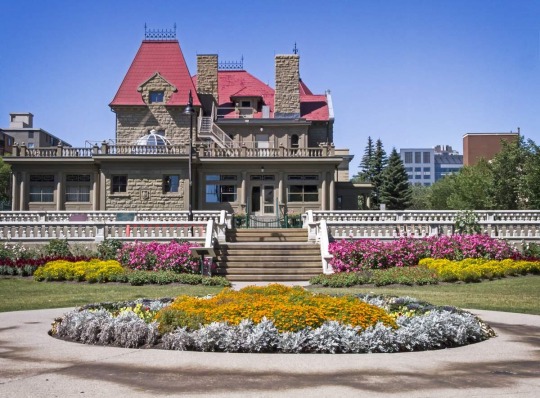
1. Lougheed House
This place was first known as "Beaulieu", which means "beautiful place" in French. It's in Calgary, Alberta's Beltline district, and is a national historic site.
The Lougheed House Conservation Society are the ones who manage the place. It is a non-profit and an independent society that devotes itself to restoring the house and allowing the public to enjoy it.
Senator James Alexander Lougheed built the mansion back in 1891, for his wife Isabella Hardisty Lougheed. Together with their first two sons, Clarence and Norman, they moved into the house. After their move, they had four more children: Edgar, Dorothy, Douglas, and Marjorie.
The family expanded the house in 1907, in order to accommodate their growing family, as well as their increasing amount of acquaintances and friends. They made the house according to the municipal building code, because of the Calgary Fire in 1886.
For the most part, the Lougheed House was a residential place, a military barracks for women, blood donor clinic, and a women's training centre. However, preceding the year 2000, the house was empty, yet cared for. On that year, however, new restoration of the house began.
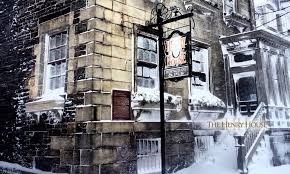
2. Henry House
The house can be found on Halifax Regional Municipality's Barrington Street. It's a two-and-a-half-storey property, and has been appointed as a National Historic Site of Canada. Under the Heritage Property Act of the province of Nova Scotia, the property is a Municipal Registered Property and a Provincially Registered Property.
Henry House was originally built for John Metzler back in 1834. He was a wealthy landowner and Halifax stonemason. The property is originally known as a house associated with William Alexander Henry, a native of Halifax who stayed with the Metzler family from 1854-1864.
Henry was very prominent back in the day, because he was a Father of Confederation. He was also the co-author of the British North America Act, a Mayor of Halifax, a provincial Attorney General, and a Member of the Nova Scotia House of Assembly. Henry served as Supreme Court of Canada's justice, and was the first Nova Scotian to ever do so.
During the late 19th and early 20th Centuries, the property was a Sailors' Home. The Navy League of Canada operated the property during that period.
Jacques Ducau and Richard (Dick) Raymond bought the property back in 1968. In 1969, the duo renovated the property, opening a restaurant and downstairs tavern inside. Little Stone Jug was the tavern, and the restaurant was deemed The Henry House.
The restaurant is still in operation today, but is now known as The Henry House Restaurant & Pub. In 1969, the property was appointed a National Historic Site.

3. Earnscliffe
The Victorian manor that was built in the style of the Gothic Revival can be found in Ottawa, Ontario. It was the house of Sir John A. Macdonald, the first Prime Minister of Canada. However, since 1930, it has become the house of Canada's British High Commissioner.
The company of Thomas McKay were the ones who built the property. It was built in 1855 for John McKinnon, McKay's son-in-law. In 1866, however, McKinnon suddenly died, and Thomas Keefer, McKay's other son-in-law, bought the property.
After two years, Keefer sold the property to a railroad developer, Thomas Reynolds. He stayed in the property for a couple of years. During his stay, the property got the name "Earnscliffe", which means "eagle's cliff".
In 1879, Reynolds died, and in 1883, Sir John A. Macdonald bought the property from Reynolds's son. During an earlier time, Macdonald had stayed with Reynolds. According to rumors, Macdonald was the one who gave the property its name. Macdonald made renovations to the property, and even added several rooms in 1888. He got sick and died on the property in 1891.
His widow, Lady Macdonald, briefly continued to reside in the home after his death, and Queen Victoria made her Baroness Macdonald of Earnscliffe. Soon, however, Lady Macdonald and her daughter departed for England, and leased the house to Lord Treowen, commander of the militia. Over the next decades, the building was home to several local notables, including Mrs. Charles A.E. Harriss.
Afterwards, William Henry Clark, Canada's first British High Commissioner, bought the house in 1930. And ever since, the property has been the British High Commissioner's house.
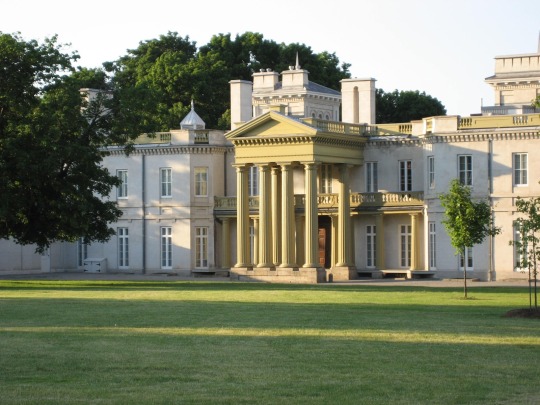
4. Dundurn Castle
If you're stopping by Hamilton, Ontario, Canada, then Dundun Castle is a must-stop. It's an 18,000 sq.ft. historic neoclassical mansion. The house cost $175,000 to build, and was finished in 1835. At the time, though, the house had the latest conveniences - such as running water and gas lighting!
The City of Hamilton is now the owner of the property, who purchased it for $50,000 in 1899. In order to make the property open to the public, the City has renovated it for almost $3 million. All of the rooms have been restored to how they looked back in 1855, when Sir Allan Napier MacNab owned it. Costumed interpreters are there to guide those who visit the house. A descendant of Sir Allan MacNab, the Duchess of Cornwall, is the Dundun Castle's Royal Patron.
Robert Charles Wetherell was the architect who built the house, completing it in 1835. Richard Beasley was the original owner of the house - however, due to financial problems, he was forced to sell it. He was one of the early settlers of Hamilton. MacNab built the house's foundation on the brick home of Beasley.
Once the house was finished, it became known for its grand entertainments all over Canada. King Edward VII and Sir John A. MacDonald are just a few of the people who have been to this historic house.
When MacNab died, the property became an institution for deaf mutes. In 1872, Donald McInnes bought the property. Later on, he would sell the property to the City of Hamilton. It was renovated, restored and appointed as a National Site of Canada.
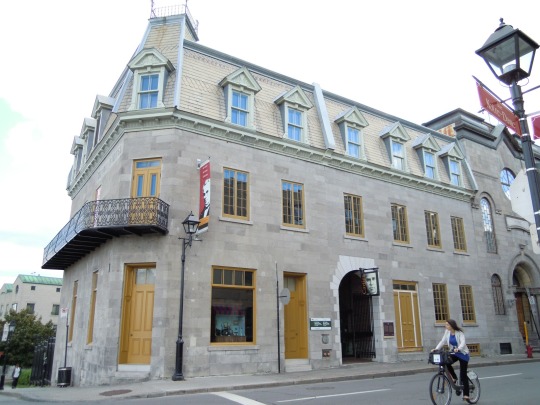
5. Sir George Etienne Cartier House Museum
Another of Canada's National Historic Sites is the house of Sir George-Étienne Cartier. The place is now a historic house museum, commemorating Cartier's life and accomplishments. Nowadays, the house also has other adjoining houses, which features the architectural heritage of 19th-Century Montreal’s middle class.
The house is made up of adjacent houses: the 'west house' and the 'east house'. These houses were separate at first, but now they form one building. The 'west house' portrays the Cartier family's way of life during the 1960s, and an exhibit can be found on the 'east house' which showcases the life of Sir George-Étienne Cartier. Sir George-Étienne Cartier was a prominent man of his time, as a politician and a middle-class Montrealer.
Sir George-Étienne Cartier House showcases the work and career of one of the Fathers of Confederation. It's also a great example of a neoclassical building that went through modifications.
The house museum can be found on the northeast edge of the Old Montreal district. It was appointed as a Canadian National Historic Site in 1964. The house was recognized because of the architectural importance and historical value.

6. Park House Museum
When you go to Amherstburg, Ontario, Canada, then you should go to Park House Museum, a historic house museum that was built in Detroit in 1796. However, in 1799, it was moved to Amherstburg.
The house has had plenty of owners, but only the Park Family is widely-recognized. The Park Family lived in this house for 102 years.
The Rotary Club of Amherstburg would buy the property in 1972. It was renovated, and became a local history museum, portraying how it was in the 1850s.
Park House Museum was built by a British loyalist near the Rouge River in 1796. The owner went to Malden when the American Revolution was over. Two years later, in 1798, it was disassembled and moved, with the help of a canoe. The property was built back up again in Amherstburg on the 17th Lot, Dalhousie St., and it would stay there for the next 173 years.
Through a draw, the lot was awarded and given to Leigh, Duff, and Shepherd. Captain Hector McLean, Fort Malden's Commanding officer, chose to give it to Nancy, a schooner, instead. Nancy's owner held the property.
In 1817, the property was bought by Alexander Mackintosh. Soon after, however, in 1823, Jean Baptists Macon bought the property. Macon, who was a famous merchant, hired the Park brothers as clerks - and in 1839, Thomas F. Park bought the house. He lent it to Theodore Jones Park, Thomas's younger brother.
After Theodore Jones Park died, John R. Park, his younger brother, bought the property. The son of Theodore, Dr. Theodore James Park, lived in the house after that. And when he died, Lizzie, his sister, owned the property.
The property changed hands multiple times afterwards. Nowadays, though, it's educating everyone about day-to-day living in the 1850s. The Park House Museum was appointed as a National Historic Site on October 4, 2018.
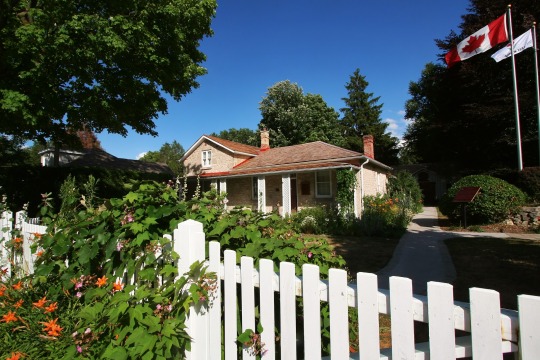
7. McCrae House
One of Canada's Historic Sites is the McCrae House. It can be found in the birthplace of John McCrae in Guelph, Ontario. John McCrae is a soldier, doctor, and the author of "In Flanders Fields".
McCrae House is a small limestone cottage that is owned by the McCrae family. It was first built in 1858, and the McCrae family stayed there from 1870 until 1873. The property changed hands multiple times, until a group of Guelph citizens bought it in 1966. They created the Lt. Col. John McCrae Birthplace Society, and raised money to restore the house.
Every year, the house offers a different theme. It has temporary and permanent exhibition spaces, which showcase the life of John McCrae. The house was appointed as a place of national significance by the Historic Sites and Monuments Board. John McCrae was also appointed as a person of national significance.

8. Manoir Papineau
The Papineau family stayed in the Manoir Papineau from 1850 to 1929. Manoir Papineau is now being operated by Parks Canada. In 1993, Parks Canada were appointed as its custodians, and they opened it to the public.
Manoir Papineau is considered to be one of the Ottawa River region's most important heritage locations. The property was built to remember Louis-Joseph Papineau, who was one of the leading politicians of the 19th Century, and was the first leader of the French-Canadian nationalists. Later on, he became La Petite-Nation's first seigneur.
The house was built when Papineau came back to Canada, after he had been exiled to Europe. And he and his family lived here, in the house, until he died. Generations of his family continued to live in the house until the 1920s.
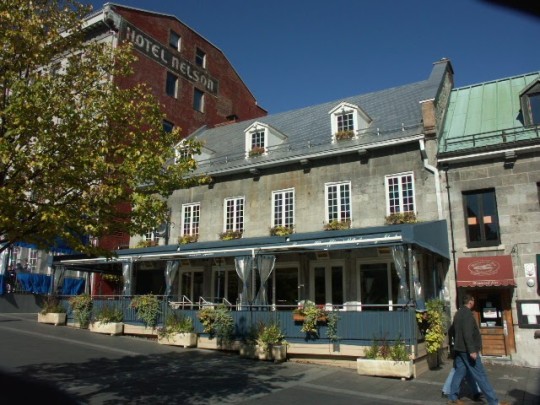
9. Maison Cartier
One of the most historic houses in Montreal is Maison Cartier. In Old Montreal, you can find the Maison Cartier, which is also appointed as a Canadian National Historic Site. It was appointed as a National Historic Site back on November 19, 1982.
The Maison Cartier was built from 1812 to 1813. Amiable Amiot dit Villeneuve, a mason, and Antoine Bouteiller, a carpenter, constructed the house. The walls and the dormers on the roof are made of ashlar. They are great examples of the 19th Century's urban architecture of Quebec. Augustin Perrault and Louis Parthenais were the first owners of the Maison Cartier.
Maison Cartier can be found in one of the most colorful areas in Montreal, The Village. Its interior design is heavily inspired from Art Deco's style and elegance. Each room has its own terrace or balcony, allowing you to enjoy the view of the city. If you want to enjoy Montreal, then you should definitely visit Maison Cartier.

10. Château Dufresne
One of the most historic places in Canada is Château Dufresne, a historic house in Mercier-Hochelaga-Maisonneuve's borough. Oscar Dufresne and Marius Dufresne, two French-Canadian entrepreneurs who had huge involvements in the Maisonneuve's history, stayed at this house for a time.
Originally, the place was parted into two different houses - one for each Dufresne. The Dufresne family would later sell the property to the Congregation of the Holy Cross, who would use it as the Holy Cross College's pavilion annex.
In 1957, the City of Montreal became the new owner of the property. However, until 1961, Holy Cross College stayed as a tenant. Then, from 1965 to 1968, the Montreal Museum of Contemporary Art was the tenant. From 1976 to 1997, the mansion's tenant was the Montreal Museum of Decorative Arts. And the Château Dufresne Museum has been staying in the property from 1999 up until now. In 2014, the property was renamed “Dufresne-Nincheri Museum”.
Marius Dufresne and Jules Renard designed the property in the style of the Beaux-Arts. It was appointed as a historic monument by the provincial government in 1976.
Worth The Visit
Each of the houses on this list is worth the visit. You will not only get to experience the history of Canada, but you will also be able to enjoy the view! If you're planning to learn history, or to simply enjoy a trip or two, then why don't you hop in your car and drive out to visit!
#canadahouse, #realestateproperty, #propertyforsaleincanada, #canadahouseforsale, #canadahouseforrent, #canadahouseprice, #canadahouseandhome, #rentahousecanada, #canadahousecost, #canadahousedebt, #houseforsalecanada, #cheaphousesforsaleincanada, #homesforsaleincanada, #canadaapartmentforsale, #propertyforsaletoronto, #tinyforsalecanada, #luxuryhomesforsaletoronto, #canadapropertyprices, #historichousesincanada, #iconichousesincanada, #mostexpensivehousesincanada, #cheappropertiesforsaleincanada
https://www.greaterpropertygroup.com/gpg-blog/Top-10-Historic-Houses-in-Canada
https://www.greaterpropertygroup.com/
#Canada house#real estate property#property for sale in Canada#Canada house for sale#Canada house for rent#Canada house price#Canada house and home#rent a house Canada#Canada house cost#Canada house debt#house for sale Canada#cheap houses for sale in Canada#homes for sale in Canada#Canada apartment for sale#property for sale Toronto#tiny house for sale Canada#luxury homes for sale Toronto#Canada property prices#historic houses in Canada#iconic houses in Canada#most expensive houses in Canada#cheap properties for sale in Canada
0 notes
Text
The History of The Rosson House Museum

The Rosson House
The City of Phoenix is one of the most popular cities in America. It is one of the cities near Scottsdale Arizona, both of them belonging to Maricopa County, with Phoenix being the county seat. Having an estimated population of 1.6 million people, it is one of the most populous cities in the U.S, and the most populated state capital. The earliest settlement began in 1867 and since then, the small town has grown to become a metropolis.
Phoenix has a thriving business environment, having more people employed by private businesses than government agencies. Although tourism remains one of the biggest industries in the city, it is the location of many headquarters for big companies around the country. Besides that, the city is also a big cultural center with many theaters and other performing arts venues, mostly for ballet and opera performances. Galleries and artwork can be found in downtown Phoenix as well. Phoenix is also home to many museums and historical centers, such as the Arizona Capitol Museum. It is a city that would always leave you fascinated.
The capital city has a lot of gems that attract visitors all year round. It has a lot to offer for everyone, regardless of your interests. But nothing catches people's attention more than the museums in the city. The museums range from science museums to art museums and even an archaeological museum. Museums can be a great place to learn about things, like objects and even places especially the history and the reason behind those objects.
One such museum is the Rosson House. The name may not strike like the place where you would expect to see much, but that's because it is a house museum. House museums are museums made from the homes of former people, which hold memorabilia and other important things from their lives that help people know more about how they may have lived their lives. These museums even provide an insight into how conditions were at the time the house was built, making them a great place to learn about the basic history of an area.
The Rosson House is one of these museums, having been built in the late 19th century. Although today, it is managed by the City of Phoenix, it was a private apartment and office for Dr. Roland Rosson and still sits in its original site on Block 14, which is today known as Heritage Square. The house is famous for being owned by many people and the way the original owners left the house. Visitors can today take guided tours around the house to see what it was like to live in Phoenix during the late 19th century. The Rosson House is seen as a house that represented wealth in the 19th century with a Victorian design that is reminiscent of that period.
Brief History of The Owner
Dr. Roland Lee Rosson was born in 1851, in a small town in Virginia to parents who were once listed as farmers. He graduated with a medical degree in 1873 from the University of Virginia. He served in the army as a First Lieutenant and assistant surgeon in 1875, stationed in Camp Thomas, Camp Apache, and Camp Grant. He was later dismissed from the army after charges that may have been falsified. He then settled in Yuma and married Miss. Flora Bell Murray in 1880, and they had five children.
Although he later practiced medicine after his dismissal from the army, he took part in politics and was elected as Mayor of Phoenix in 1895, but he resigned in 1896, not even spending up to a year in the position. Before then, he held other positions on different levels.
Before then, in 1882, he purchased land from his in-laws, Flora's sister and her husband, which would be the site of the Rosson House. In 1895, the Rosson House was completed, a house that was described as being sophisticated for its time. But in 1897, Rosson sold the house due to unknown reasons and moved to Los Angeles with his family, where he died in 1898, from gastroenteritis, after earlier speculations that it was suicide.
The Rosson House was constructed on land bought by Dr. Rosson in 1882 from Margaret A. Richardson and her husband Mark P. Richardson, who were his in-laws, with Margaret being Flora's half-sister. The land was called Block 14. There are suggestions that he lived on the land in an adobe house, someplace near where the Rosson House was built.
The final plan of the Rosson House was designed by A.P. Petit and in 1894, Rosson put an advertisement in the newspaper asking for interested contractors who would be willing to take up the building of the house. George E. Cisney later got the job, doing it for the sum of $7,565. Construction of the house started immediately in 1894 and was completed in 1895.
Upon completion, the house was tagged as one of the "most expensive homes". This may have been true because it was fitted with amenities like electric lights, running water, both hot and cold, and a telephone, things that were not so common in homes then.
However, by the end of the year, Dr. Rosson put his house up for rent and it was occupied by a politician named Whitelaw Reid, who needed it upon recommendation due to an illness he was suffering. By 1897, Rosson sold the house altogether and moved to Los Angeles where he stayed until his death in 1898. Although there are no clear reasons why he sold the house, some people speculate it was because he was in debt.
The house was bought by Aaron Goldberg, a Jewish politician, for $10,000. The house was again sold in 1904 Steven. W. Higley, a railroad builder. The Higleys resided there until 1914 when they sold it to the Gammel family. The Gammels used part of the house as a boarding house where people paid to stay, which made them make changes to the style of the house. The final people to purchase the house was the City of Phoenix in 1974. The house was published in the National Registry of Historic Places in 1971 and is today run by the Heritage Square Foundation and Guild. For more information regarding areas near Scottsdale AZ, visit https://tiffanyfinalaw.com
0 notes
Text
Top 10 Historic Houses in Canada
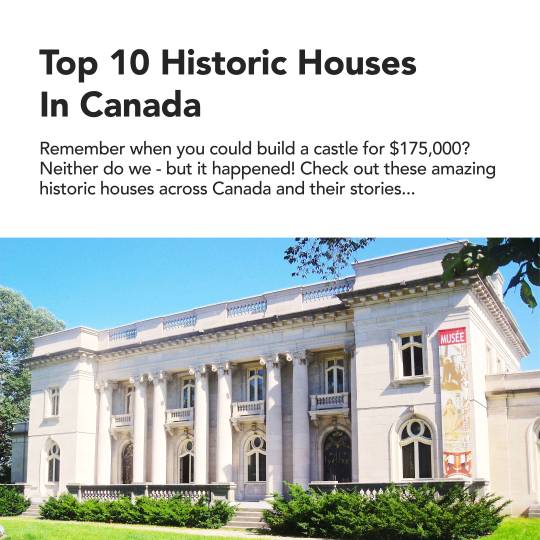
When visiting another country, it's always nice to see some of the historic and beautiful places it has to offer. You should take time to visit these places not only to appreciate the country even more, but also to learn more about it. And there are no other places more historic or more colorful than houses in which history happened.
10 Historic Houses In Canada
Canada is one of the most historic and colorful countries in the world. Everywhere you go, you'll find a place worth visiting. However, there are some places that are more worth visiting than others. Here are some of the houses that you should take time to visit:

1. Lougheed House
This place was first known as "Beaulieu", which means "beautiful place" in French. It's in Calgary, Alberta's Beltline district, and is a national historic site.
The Lougheed House Conservation Society are the ones who manage the place. It is a non-profit and an independent society that devotes itself to restoring the house and allowing the public to enjoy it.
Senator James Alexander Lougheed built the mansion back in 1891, for his wife Isabella Hardisty Lougheed. Together with their first two sons, Clarence and Norman, they moved into the house. After their move, they had four more children: Edgar, Dorothy, Douglas, and Marjorie.
The family expanded the house in 1907, in order to accommodate their growing family, as well as their increasing amount of acquaintances and friends. They made the house according to the municipal building code, because of the Calgary Fire in 1886.
For the most part, the Lougheed House was a residential place, a military barracks for women, blood donor clinic, and a women's training centre. However, preceding the year 2000, the house was empty, yet cared for. On that year, however, new restoration of the house began.
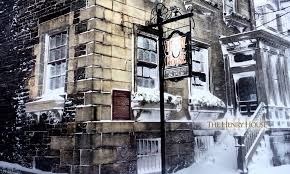
2. Henry House
The house can be found on Halifax Regional Municipality's Barrington Street. It's a two-and-a-half-storey property, and has been appointed as a National Historic Site of Canada. Under the Heritage Property Act of the province of Nova Scotia, the property is a Municipal Registered Property and a Provincially Registered Property.
Henry House was originally built for John Metzler back in 1834. He was a wealthy landowner and Halifax stonemason. The property is originally known as a house associated with William Alexander Henry, a native of Halifax who stayed with the Metzler family from 1854-1864.
Henry was very prominent back in the day, because he was a Father of Confederation. He was also the co-author of the British North America Act, a Mayor of Halifax, a provincial Attorney General, and a Member of the Nova Scotia House of Assembly. Henry served as Supreme Court of Canada's justice, and was the first Nova Scotian to ever do so.
During the late 19th and early 20th Centuries, the property was a Sailors' Home. The Navy League of Canada operated the property during that period.
Jacques Ducau and Richard (Dick) Raymond bought the property back in 1968. In 1969, the duo renovated the property, opening a restaurant and downstairs tavern inside. Little Stone Jug was the tavern, and the restaurant was deemed The Henry House.
The restaurant is still in operation today, but is now known as The Henry House Restaurant & Pub. In 1969, the property was appointed a National Historic Site.

3. Earnscliffe
The Victorian manor that was built in the style of the Gothic Revival can be found in Ottawa, Ontario. It was the house of Sir John A. Macdonald, the first Prime Minister of Canada. However, since 1930, it has become the house of Canada's British High Commissioner.
The company of Thomas McKay were the ones who built the property. It was built in 1855 for John McKinnon, McKay's son-in-law. In 1866, however, McKinnon suddenly died, and Thomas Keefer, McKay's other son-in-law, bought the property.
After two years, Keefer sold the property to a railroad developer, Thomas Reynolds. He stayed in the property for a couple of years. During his stay, the property got the name "Earnscliffe", which means "eagle's cliff".
In 1879, Reynolds died, and in 1883, Sir John A. Macdonald bought the property from Reynolds's son. During an earlier time, Macdonald had stayed with Reynolds. According to rumors, Macdonald was the one who gave the property its name. Macdonald made renovations to the property, and even added several rooms in 1888. He got sick and died on the property in 1891.
His widow, Lady Macdonald, briefly continued to reside in the home after his death, and Queen Victoria made her Baroness Macdonald of Earnscliffe. Soon, however, Lady Macdonald and her daughter departed for England, and leased the house to Lord Treowen, commander of the militia. Over the next decades, the building was home to several local notables, including Mrs. Charles A.E. Harriss.
Afterwards, William Henry Clark, Canada's first British High Commissioner, bought the house in 1930. And ever since, the property has been the British High Commissioner's house.

4. Dundurn Castle
If you're stopping by Hamilton, Ontario, Canada, then Dundun Castle is a must-stop. It's an 18,000 sq.ft. historic neoclassical mansion. The house cost $175,000 to build, and was finished in 1835. At the time, though, the house had the latest conveniences - such as running water and gas lighting!
The City of Hamilton is now the owner of the property, who purchased it for $50,000 in 1899. In order to make the property open to the public, the City has renovated it for almost $3 million. All of the rooms have been restored to how they looked back in 1855, when Sir Allan Napier MacNab owned it. Costumed interpreters are there to guide those who visit the house. A descendant of Sir Allan MacNab, the Duchess of Cornwall, is the Dundun Castle's Royal Patron.
Robert Charles Wetherell was the architect who built the house, completing it in 1835. Richard Beasley was the original owner of the house - however, due to financial problems, he was forced to sell it. He was one of the early settlers of Hamilton. MacNab built the house's foundation on the brick home of Beasley.
Once the house was finished, it became known for its grand entertainments all over Canada. King Edward VII and Sir John A. MacDonald are just a few of the people who have been to this historic house.
When MacNab died, the property became an institution for deaf mutes. In 1872, Donald McInnes bought the property. Later on, he would sell the property to the City of Hamilton. It was renovated, restored and appointed as a National Site of Canada.
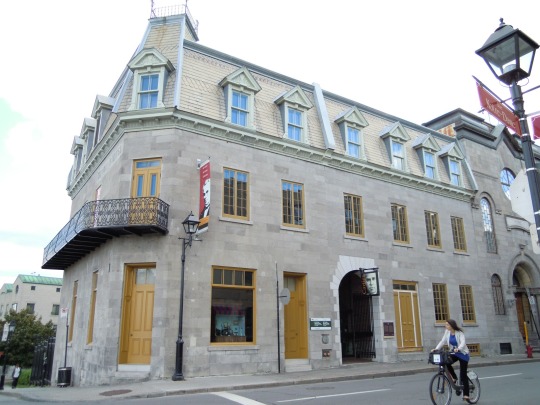
5. Sir George Etienne Cartier House Museum
Another of Canada's National Historic Sites is the house of Sir George-Étienne Cartier. The place is now a historic house museum, commemorating Cartier's life and accomplishments. Nowadays, the house also has other adjoining houses, which features the architectural heritage of 19th-Century Montreal’s middle class.
The house is made up of adjacent houses: the 'west house' and the 'east house'. These houses were separate at first, but now they form one building. The 'west house' portrays the Cartier family's way of life during the 1960s, and an exhibit can be found on the 'east house' which showcases the life of Sir George-Étienne Cartier. Sir George-Étienne Cartier was a prominent man of his time, as a politician and a middle-class Montrealer.
Sir George-Étienne Cartier House showcases the work and career of one of the Fathers of Confederation. It's also a great example of a neoclassical building that went through modifications.
The house museum can be found on the northeast edge of the Old Montreal district. It was appointed as a Canadian National Historic Site in 1964. The house was recognized because of the architectural importance and historical value.

6. Park House Museum
When you go to Amherstburg, Ontario, Canada, then you should go to Park House Museum, a historic house museum that was built in Detroit in 1796. However, in 1799, it was moved to Amherstburg.
The house has had plenty of owners, but only the Park Family is widely-recognized. The Park Family lived in this house for 102 years.
The Rotary Club of Amherstburg would buy the property in 1972. It was renovated, and became a local history museum, portraying how it was in the 1850s.
Park House Museum was built by a British loyalist near the Rouge River in 1796. The owner went to Malden when the American Revolution was over. Two years later, in 1798, it was disassembled and moved, with the help of a canoe. The property was built back up again in Amherstburg on the 17th Lot, Dalhousie St., and it would stay there for the next 173 years.
Through a draw, the lot was awarded and given to Leigh, Duff, and Shepherd. Captain Hector McLean, Fort Malden's Commanding officer, chose to give it to Nancy, a schooner, instead. Nancy's owner held the property.
In 1817, the property was bought by Alexander Mackintosh. Soon after, however, in 1823, Jean Baptists Macon bought the property. Macon, who was a famous merchant, hired the Park brothers as clerks - and in 1839, Thomas F. Park bought the house. He lent it to Theodore Jones Park, Thomas's younger brother.
After Theodore Jones Park died, John R. Park, his younger brother, bought the property. The son of Theodore, Dr. Theodore James Park, lived in the house after that. And when he died, Lizzie, his sister, owned the property.
The property changed hands multiple times afterwards. Nowadays, though, it's educating everyone about day-to-day living in the 1850s. The Park House Museum was appointed as a National Historic Site on October 4, 2018.

7. McCrae House
One of Canada's Historic Sites is the McCrae House. It can be found in the birthplace of John McCrae in Guelph, Ontario. John McCrae is a soldier, doctor, and the author of "In Flanders Fields".
McCrae House is a small limestone cottage that is owned by the McCrae family. It was first built in 1858, and the McCrae family stayed there from 1870 until 1873. The property changed hands multiple times, until a group of Guelph citizens bought it in 1966. They created the Lt. Col. John McCrae Birthplace Society, and raised money to restore the house.
Every year, the house offers a different theme. It has temporary and permanent exhibition spaces, which showcase the life of John McCrae. The house was appointed as a place of national significance by the Historic Sites and Monuments Board. John McCrae was also appointed as a person of national significance.

8. Manoir Papineau
The Papineau family stayed in the Manoir Papineau from 1850 to 1929. Manoir Papineau is now being operated by Parks Canada. In 1993, Parks Canada were appointed as its custodians, and they opened it to the public.
Manoir Papineau is considered to be one of the Ottawa River region's most important heritage locations. The property was built to remember Louis-Joseph Papineau, who was one of the leading politicians of the 19th Century, and was the first leader of the French-Canadian nationalists. Later on, he became La Petite-Nation's first seigneur.
The house was built when Papineau came back to Canada, after he had been exiled to Europe. And he and his family lived here, in the house, until he died. Generations of his family continued to live in the house until the 1920s.
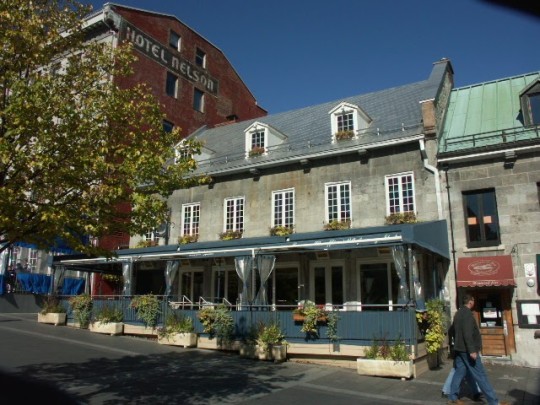
9. Maison Cartier
One of the most historic houses in Montreal is Maison Cartier. In Old Montreal, you can find the Maison Cartier, which is also appointed as a Canadian National Historic Site. It was appointed as a National Historic Site back on November 19, 1982.
The Maison Cartier was built from 1812 to 1813. Amiable Amiot dit Villeneuve, a mason, and Antoine Bouteiller, a carpenter, constructed the house. The walls and the dormers on the roof are made of ashlar. They are great examples of the 19th Century's urban architecture of Quebec. Augustin Perrault and Louis Parthenais were the first owners of the Maison Cartier.
Maison Cartier can be found in one of the most colorful areas in Montreal, The Village. Its interior design is heavily inspired from Art Deco's style and elegance. Each room has its own terrace or balcony, allowing you to enjoy the view of the city. If you want to enjoy Montreal, then you should definitely visit Maison Cartier.
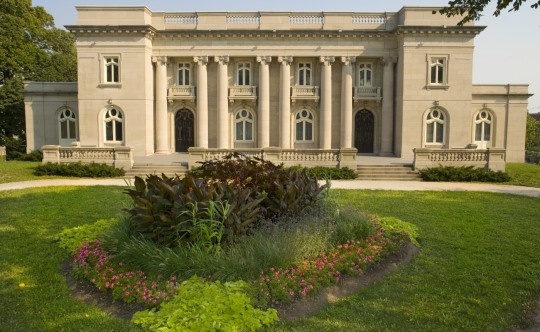
10. Château Dufresne
One of the most historic places in Canada is Château Dufresne, a historic house in Mercier-Hochelaga-Maisonneuve's borough. Oscar Dufresne and Marius Dufresne, two French-Canadian entrepreneurs who had huge involvements in the Maisonneuve's history, stayed at this house for a time.
Originally, the place was parted into two different houses - one for each Dufresne. The Dufresne family would later sell the property to the Congregation of the Holy Cross, who would use it as the Holy Cross College's pavilion annex.
In 1957, the City of Montreal became the new owner of the property. However, until 1961, Holy Cross College stayed as a tenant. Then, from 1965 to 1968, the Montreal Museum of Contemporary Art was the tenant. From 1976 to 1997, the mansion's tenant was the Montreal Museum of Decorative Arts. And the Château Dufresne Museum has been staying in the property from 1999 up until now. In 2014, the property was renamed “Dufresne-Nincheri Museum”.
Marius Dufresne and Jules Renard designed the property in the style of the Beaux-Arts. It was appointed as a historic monument by the provincial government in 1976.
Worth The Visit
Each of the houses on this list is worth the visit. You will not only get to experience the history of Canada, but you will also be able to enjoy the view! If you're planning to learn history, or to simply enjoy a trip or two, then why don't you hop in your car and drive out to visit!
#canadahouse, #realestateproperty, #propertyforsaleincanada, #canadahouseforsale, #canadahouseforrent, #canadahouseprice, #canadahouseandhome, #rentahousecanada, #canadahousecost, #canadahousedebt, #houseforsalecanada, #cheaphousesforsaleincanada, #homesforsaleincanada, #canadaapartmentforsale, #propertyforsaletoronto, #tinyforsalecanada, #luxuryhomesforsaletoronto, #canadapropertyprices, #historichousesincanada, #iconichousesincanada, #mostexpensivehousesincanada, #cheappropertiesforsaleincanada
https://www.greaterpropertygroup.com/gpg-blog/Top-10-Historic-Houses-in-Canada
https://www.greaterpropertygroup.com/
#Canada house#real estate property#property for sale in Canada#Canada house for sale#Canada house for rent#Canada house price#Canada house and home#rent a house Canada#Canada house cost#Canada house debt#house for sale Canada#cheap houses for sale in Canada#homes for sale in Canada#Canada apartment for sale#property for sale Toronto#tiny house for sale Canada#luxury homes for sale Toronto#Canada property prices#historic houses in Canada#iconic houses in Canada#most expensive houses in Canada#cheap properties for sale in Canada
0 notes
Text
Top 10 Historic Houses in Canada
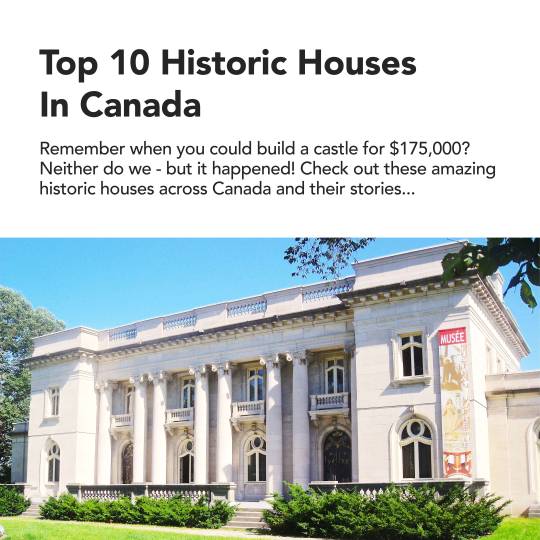
When visiting another country, it's always nice to see some of the historic and beautiful places it has to offer. You should take time to visit these places not only to appreciate the country even more, but also to learn more about it. And there are no other places more historic or more colorful than houses in which history happened.
10 Historic Houses In Canada
Canada is one of the most historic and colorful countries in the world. Everywhere you go, you'll find a place worth visiting. However, there are some places that are more worth visiting than others. Here are some of the houses that you should take time to visit:

1. Lougheed House
This place was first known as "Beaulieu", which means "beautiful place" in French. It's in Calgary, Alberta's Beltline district, and is a national historic site.
The Lougheed House Conservation Society are the ones who manage the place. It is a non-profit and an independent society that devotes itself to restoring the house and allowing the public to enjoy it.
Senator James Alexander Lougheed built the mansion back in 1891, for his wife Isabella Hardisty Lougheed. Together with their first two sons, Clarence and Norman, they moved into the house. After their move, they had four more children: Edgar, Dorothy, Douglas, and Marjorie.
The family expanded the house in 1907, in order to accommodate their growing family, as well as their increasing amount of acquaintances and friends. They made the house according to the municipal building code, because of the Calgary Fire in 1886.
For the most part, the Lougheed House was a residential place, a military barracks for women, blood donor clinic, and a women's training centre. However, preceding the year 2000, the house was empty, yet cared for. On that year, however, new restoration of the house began.
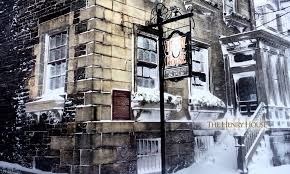
2. Henry House
The house can be found on Halifax Regional Municipality's Barrington Street. It's a two-and-a-half-storey property, and has been appointed as a National Historic Site of Canada. Under the Heritage Property Act of the province of Nova Scotia, the property is a Municipal Registered Property and a Provincially Registered Property.
Henry House was originally built for John Metzler back in 1834. He was a wealthy landowner and Halifax stonemason. The property is originally known as a house associated with William Alexander Henry, a native of Halifax who stayed with the Metzler family from 1854-1864.
Henry was very prominent back in the day, because he was a Father of Confederation. He was also the co-author of the British North America Act, a Mayor of Halifax, a provincial Attorney General, and a Member of the Nova Scotia House of Assembly. Henry served as Supreme Court of Canada's justice, and was the first Nova Scotian to ever do so.
During the late 19th and early 20th Centuries, the property was a Sailors' Home. The Navy League of Canada operated the property during that period.
Jacques Ducau and Richard (Dick) Raymond bought the property back in 1968. In 1969, the duo renovated the property, opening a restaurant and downstairs tavern inside. Little Stone Jug was the tavern, and the restaurant was deemed The Henry House.
The restaurant is still in operation today, but is now known as The Henry House Restaurant & Pub. In 1969, the property was appointed a National Historic Site.

3. Earnscliffe
The Victorian manor that was built in the style of the Gothic Revival can be found in Ottawa, Ontario. It was the house of Sir John A. Macdonald, the first Prime Minister of Canada. However, since 1930, it has become the house of Canada's British High Commissioner.
The company of Thomas McKay were the ones who built the property. It was built in 1855 for John McKinnon, McKay's son-in-law. In 1866, however, McKinnon suddenly died, and Thomas Keefer, McKay's other son-in-law, bought the property.
After two years, Keefer sold the property to a railroad developer, Thomas Reynolds. He stayed in the property for a couple of years. During his stay, the property got the name "Earnscliffe", which means "eagle's cliff".
In 1879, Reynolds died, and in 1883, Sir John A. Macdonald bought the property from Reynolds's son. During an earlier time, Macdonald had stayed with Reynolds. According to rumors, Macdonald was the one who gave the property its name. Macdonald made renovations to the property, and even added several rooms in 1888. He got sick and died on the property in 1891.
His widow, Lady Macdonald, briefly continued to reside in the home after his death, and Queen Victoria made her Baroness Macdonald of Earnscliffe. Soon, however, Lady Macdonald and her daughter departed for England, and leased the house to Lord Treowen, commander of the militia. Over the next decades, the building was home to several local notables, including Mrs. Charles A.E. Harriss.
Afterwards, William Henry Clark, Canada's first British High Commissioner, bought the house in 1930. And ever since, the property has been the British High Commissioner's house.

4. Dundurn Castle
If you're stopping by Hamilton, Ontario, Canada, then Dundun Castle is a must-stop. It's an 18,000 sq.ft. historic neoclassical mansion. The house cost $175,000 to build, and was finished in 1835. At the time, though, the house had the latest conveniences - such as running water and gas lighting!
The City of Hamilton is now the owner of the property, who purchased it for $50,000 in 1899. In order to make the property open to the public, the City has renovated it for almost $3 million. All of the rooms have been restored to how they looked back in 1855, when Sir Allan Napier MacNab owned it. Costumed interpreters are there to guide those who visit the house. A descendant of Sir Allan MacNab, the Duchess of Cornwall, is the Dundun Castle's Royal Patron.
Robert Charles Wetherell was the architect who built the house, completing it in 1835. Richard Beasley was the original owner of the house - however, due to financial problems, he was forced to sell it. He was one of the early settlers of Hamilton. MacNab built the house's foundation on the brick home of Beasley.
Once the house was finished, it became known for its grand entertainments all over Canada. King Edward VII and Sir John A. MacDonald are just a few of the people who have been to this historic house.
When MacNab died, the property became an institution for deaf mutes. In 1872, Donald McInnes bought the property. Later on, he would sell the property to the City of Hamilton. It was renovated, restored and appointed as a National Site of Canada.
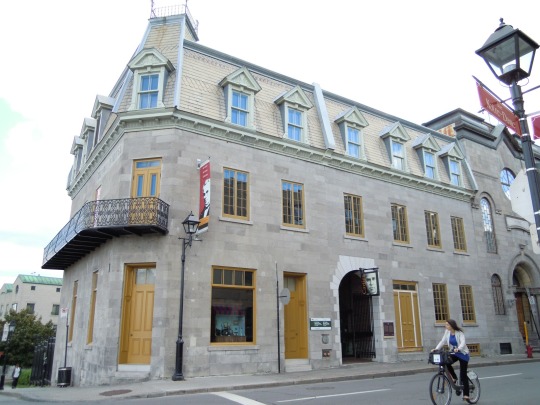
5. Sir George Etienne Cartier House Museum
Another of Canada's National Historic Sites is the house of Sir George-Étienne Cartier. The place is now a historic house museum, commemorating Cartier's life and accomplishments. Nowadays, the house also has other adjoining houses, which features the architectural heritage of 19th-Century Montreal’s middle class.
The house is made up of adjacent houses: the 'west house' and the 'east house'. These houses were separate at first, but now they form one building. The 'west house' portrays the Cartier family's way of life during the 1960s, and an exhibit can be found on the 'east house' which showcases the life of Sir George-Étienne Cartier. Sir George-Étienne Cartier was a prominent man of his time, as a politician and a middle-class Montrealer.
Sir George-Étienne Cartier House showcases the work and career of one of the Fathers of Confederation. It's also a great example of a neoclassical building that went through modifications.
The house museum can be found on the northeast edge of the Old Montreal district. It was appointed as a Canadian National Historic Site in 1964. The house was recognized because of the architectural importance and historical value.

6. Park House Museum
When you go to Amherstburg, Ontario, Canada, then you should go to Park House Museum, a historic house museum that was built in Detroit in 1796. However, in 1799, it was moved to Amherstburg.
The house has had plenty of owners, but only the Park Family is widely-recognized. The Park Family lived in this house for 102 years.
The Rotary Club of Amherstburg would buy the property in 1972. It was renovated, and became a local history museum, portraying how it was in the 1850s.
Park House Museum was built by a British loyalist near the Rouge River in 1796. The owner went to Malden when the American Revolution was over. Two years later, in 1798, it was disassembled and moved, with the help of a canoe. The property was built back up again in Amherstburg on the 17th Lot, Dalhousie St., and it would stay there for the next 173 years.
Through a draw, the lot was awarded and given to Leigh, Duff, and Shepherd. Captain Hector McLean, Fort Malden's Commanding officer, chose to give it to Nancy, a schooner, instead. Nancy's owner held the property.
In 1817, the property was bought by Alexander Mackintosh. Soon after, however, in 1823, Jean Baptists Macon bought the property. Macon, who was a famous merchant, hired the Park brothers as clerks - and in 1839, Thomas F. Park bought the house. He lent it to Theodore Jones Park, Thomas's younger brother.
After Theodore Jones Park died, John R. Park, his younger brother, bought the property. The son of Theodore, Dr. Theodore James Park, lived in the house after that. And when he died, Lizzie, his sister, owned the property.
The property changed hands multiple times afterwards. Nowadays, though, it's educating everyone about day-to-day living in the 1850s. The Park House Museum was appointed as a National Historic Site on October 4, 2018.
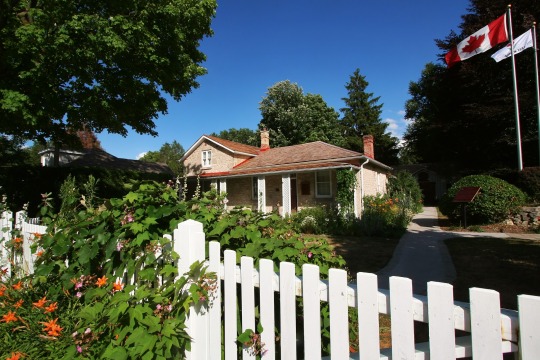
7. McCrae House
One of Canada's Historic Sites is the McCrae House. It can be found in the birthplace of John McCrae in Guelph, Ontario. John McCrae is a soldier, doctor, and the author of "In Flanders Fields".
McCrae House is a small limestone cottage that is owned by the McCrae family. It was first built in 1858, and the McCrae family stayed there from 1870 until 1873. The property changed hands multiple times, until a group of Guelph citizens bought it in 1966. They created the Lt. Col. John McCrae Birthplace Society, and raised money to restore the house.
Every year, the house offers a different theme. It has temporary and permanent exhibition spaces, which showcase the life of John McCrae. The house was appointed as a place of national significance by the Historic Sites and Monuments Board. John McCrae was also appointed as a person of national significance.

8. Manoir Papineau
The Papineau family stayed in the Manoir Papineau from 1850 to 1929. Manoir Papineau is now being operated by Parks Canada. In 1993, Parks Canada were appointed as its custodians, and they opened it to the public.
Manoir Papineau is considered to be one of the Ottawa River region's most important heritage locations. The property was built to remember Louis-Joseph Papineau, who was one of the leading politicians of the 19th Century, and was the first leader of the French-Canadian nationalists. Later on, he became La Petite-Nation's first seigneur.
The house was built when Papineau came back to Canada, after he had been exiled to Europe. And he and his family lived here, in the house, until he died. Generations of his family continued to live in the house until the 1920s.

9. Maison Cartier
One of the most historic houses in Montreal is Maison Cartier. In Old Montreal, you can find the Maison Cartier, which is also appointed as a Canadian National Historic Site. It was appointed as a National Historic Site back on November 19, 1982.
The Maison Cartier was built from 1812 to 1813. Amiable Amiot dit Villeneuve, a mason, and Antoine Bouteiller, a carpenter, constructed the house. The walls and the dormers on the roof are made of ashlar. They are great examples of the 19th Century's urban architecture of Quebec. Augustin Perrault and Louis Parthenais were the first owners of the Maison Cartier.
Maison Cartier can be found in one of the most colorful areas in Montreal, The Village. Its interior design is heavily inspired from Art Deco's style and elegance. Each room has its own terrace or balcony, allowing you to enjoy the view of the city. If you want to enjoy Montreal, then you should definitely visit Maison Cartier.
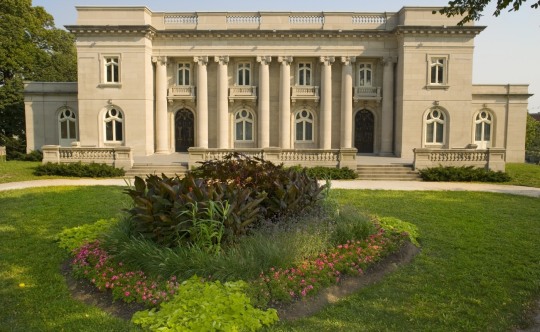
10. Château Dufresne
One of the most historic places in Canada is Château Dufresne, a historic house in Mercier-Hochelaga-Maisonneuve's borough. Oscar Dufresne and Marius Dufresne, two French-Canadian entrepreneurs who had huge involvements in the Maisonneuve's history, stayed at this house for a time.
Originally, the place was parted into two different houses - one for each Dufresne. The Dufresne family would later sell the property to the Congregation of the Holy Cross, who would use it as the Holy Cross College's pavilion annex.
In 1957, the City of Montreal became the new owner of the property. However, until 1961, Holy Cross College stayed as a tenant. Then, from 1965 to 1968, the Montreal Museum of Contemporary Art was the tenant. From 1976 to 1997, the mansion's tenant was the Montreal Museum of Decorative Arts. And the Château Dufresne Museum has been staying in the property from 1999 up until now. In 2014, the property was renamed “Dufresne-Nincheri Museum”.
Marius Dufresne and Jules Renard designed the property in the style of the Beaux-Arts. It was appointed as a historic monument by the provincial government in 1976.
Worth The Visit
Each of the houses on this list is worth the visit. You will not only get to experience the history of Canada, but you will also be able to enjoy the view! If you're planning to learn history, or to simply enjoy a trip or two, then why don't you hop in your car and drive out to visit!
#canadahouse, #realestateproperty, #propertyforsaleincanada, #canadahouseforsale, #canadahouseforrent, #canadahouseprice, #canadahouseandhome, #rentahousecanada, #canadahousecost, #canadahousedebt, #houseforsalecanada, #cheaphousesforsaleincanada, #homesforsaleincanada, #canadaapartmentforsale, #propertyforsaletoronto, #tinyforsalecanada, #luxuryhomesforsaletoronto, #canadapropertyprices, #historichousesincanada, #iconichousesincanada, #mostexpensivehousesincanada, #cheappropertiesforsaleincanada
https://www.greaterpropertygroup.com/gpg-blog/Top-10-Historic-Houses-in-Canada
https://www.greaterpropertygroup.com/
#Canada house#real estate property#property for sale in Canada#Canada house for sale#Canada house for rent#Canada house price#Canada house and home#rent a house Canada#Canada house cost#Canada house debt#house for sale Canada#cheap houses for sale in Canada#homes for sale in Canada#Canada apartment for sale#property for sale Toronto#tiny for sale Canada#luxury homes for sale Toronto#Canada property prices#historic houses in Canada#iconic houses in Canada#most expensive houses in Canada#cheap properties for sale in Canada
0 notes